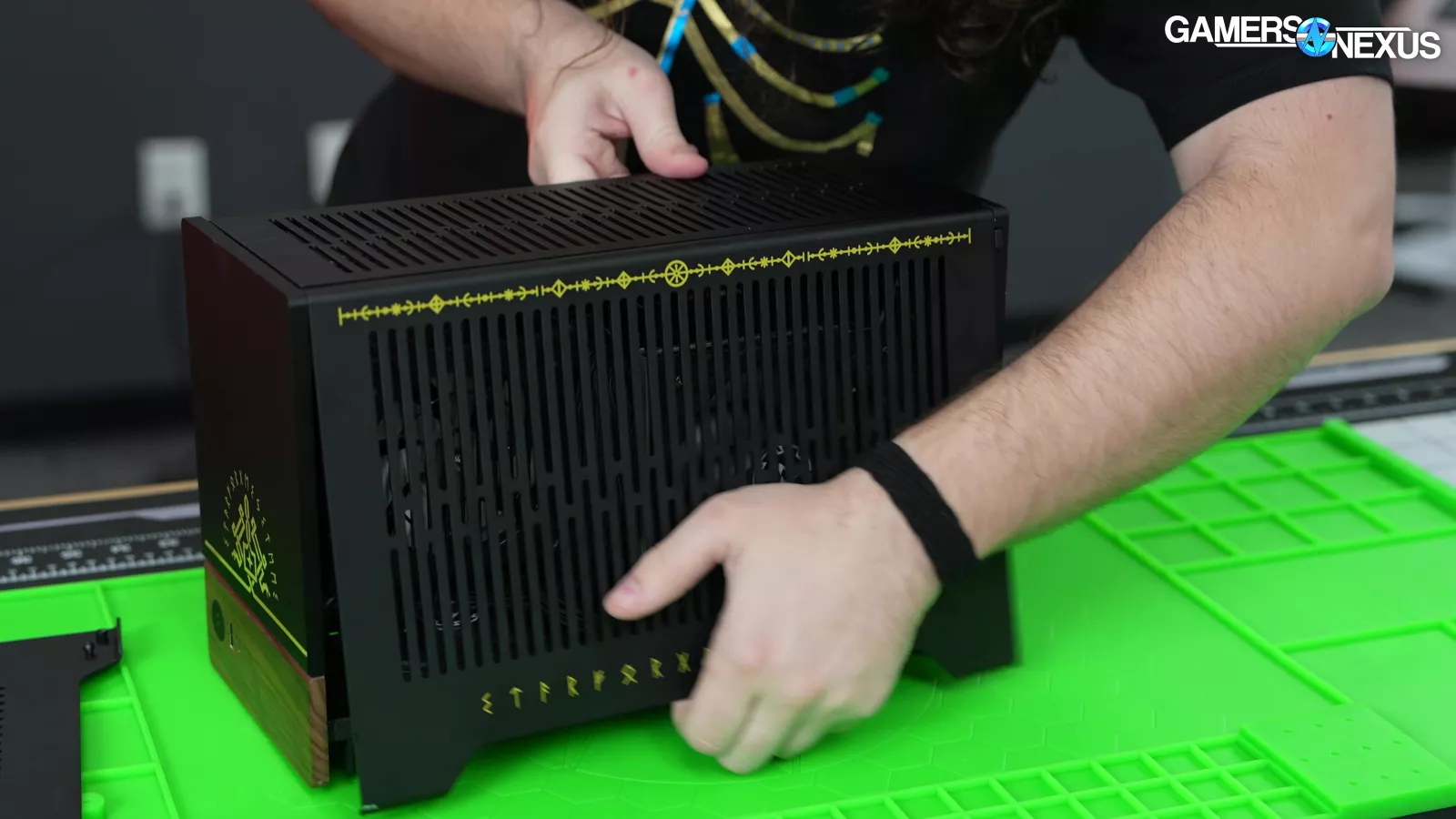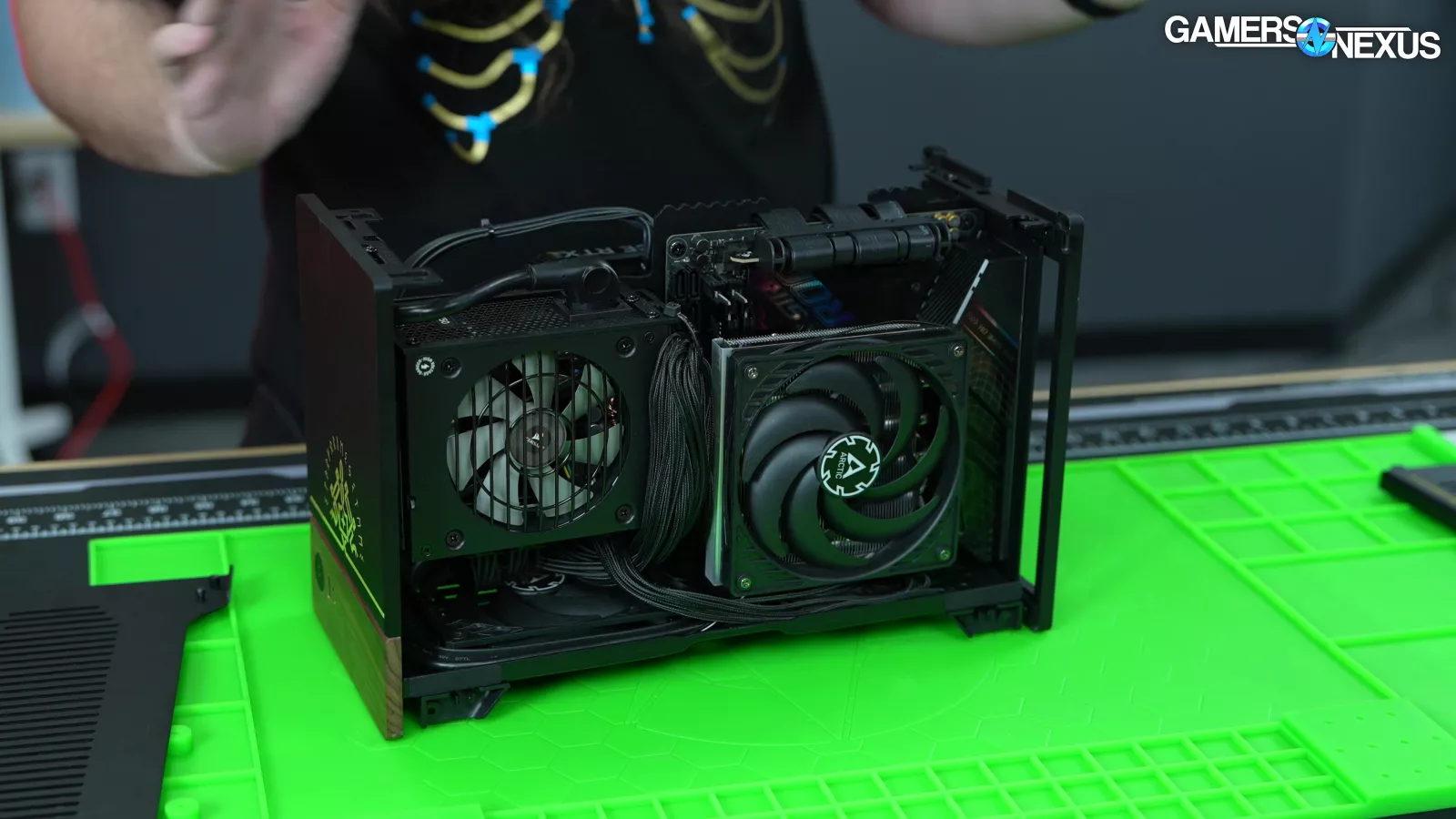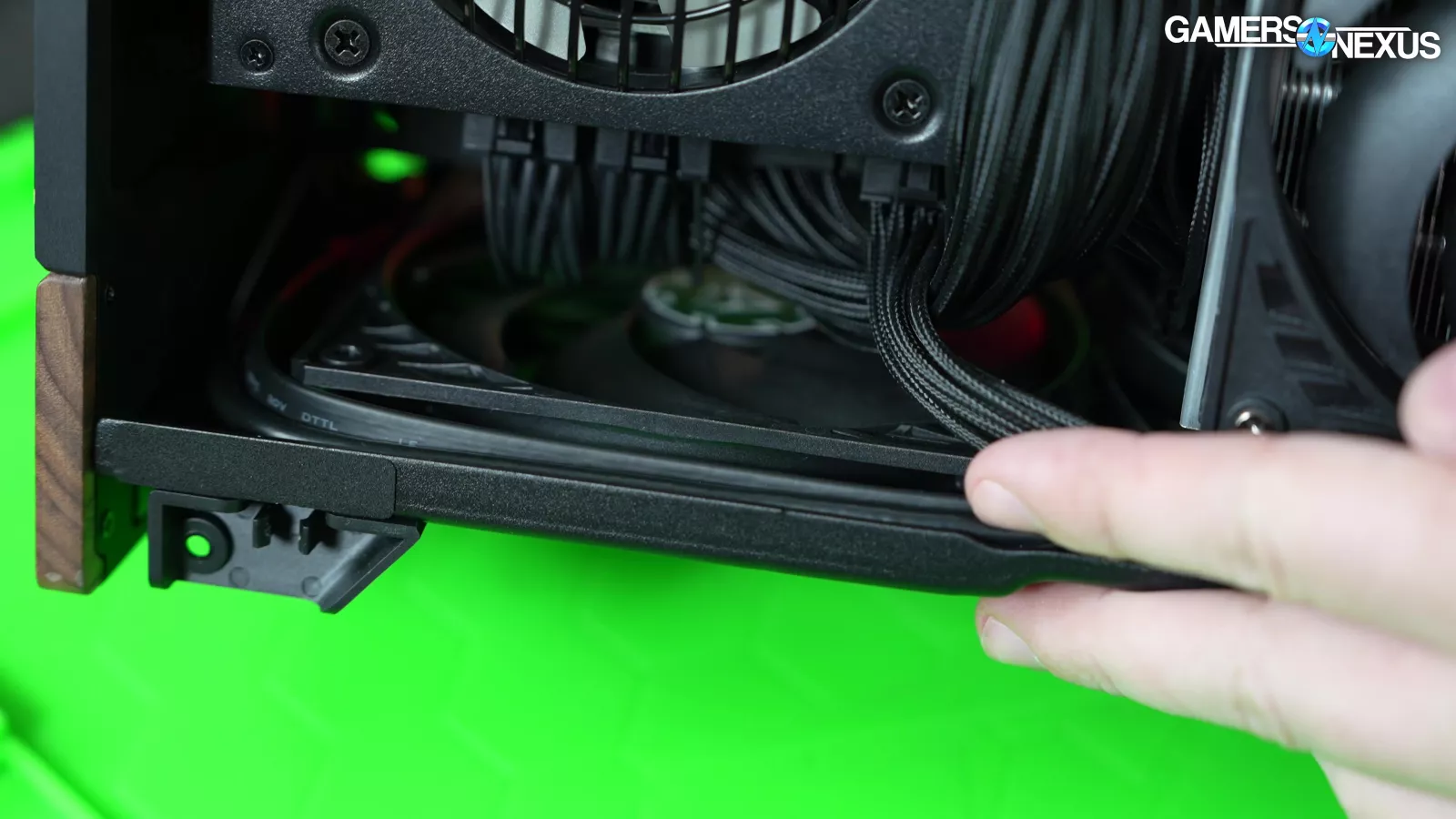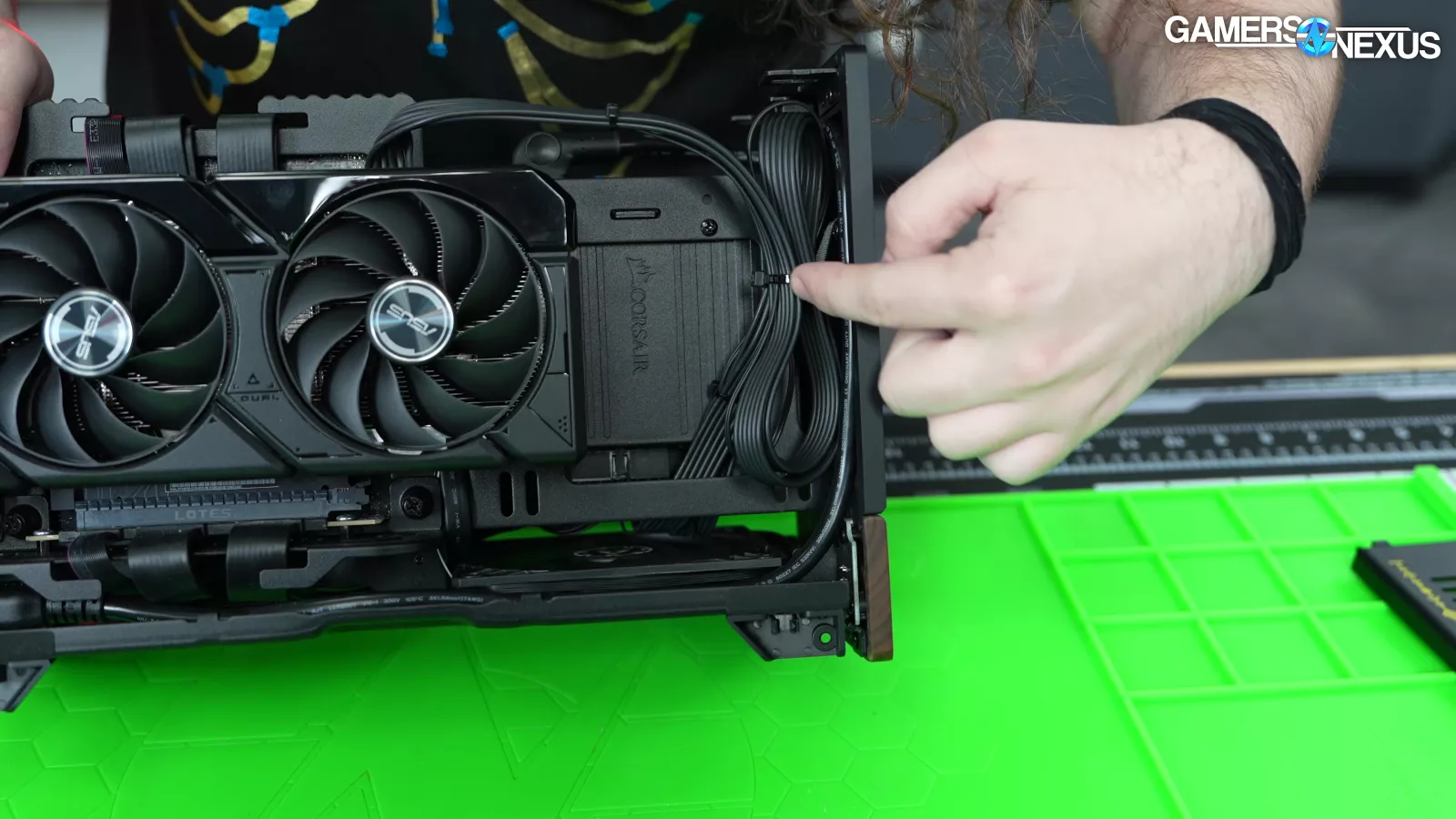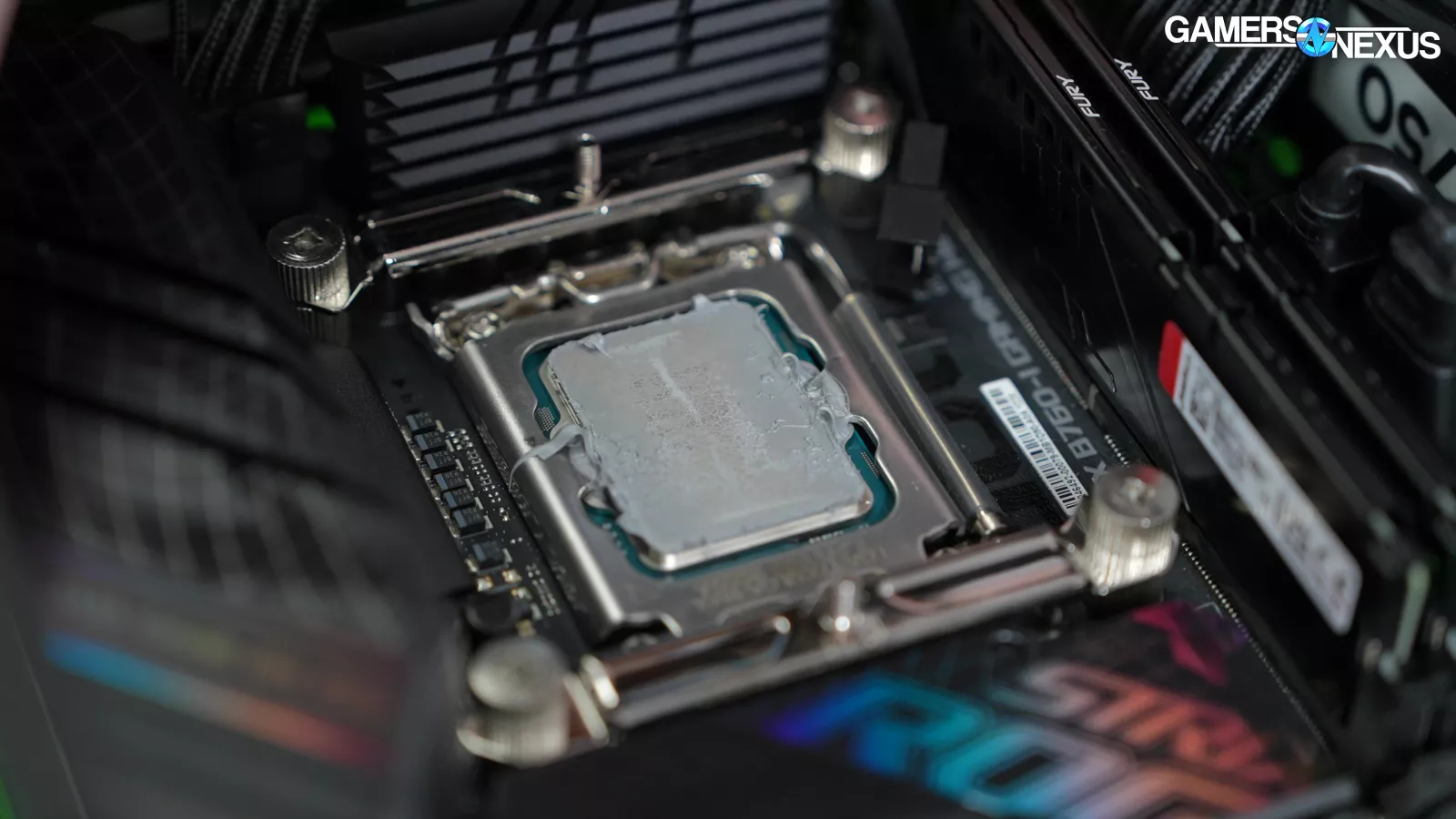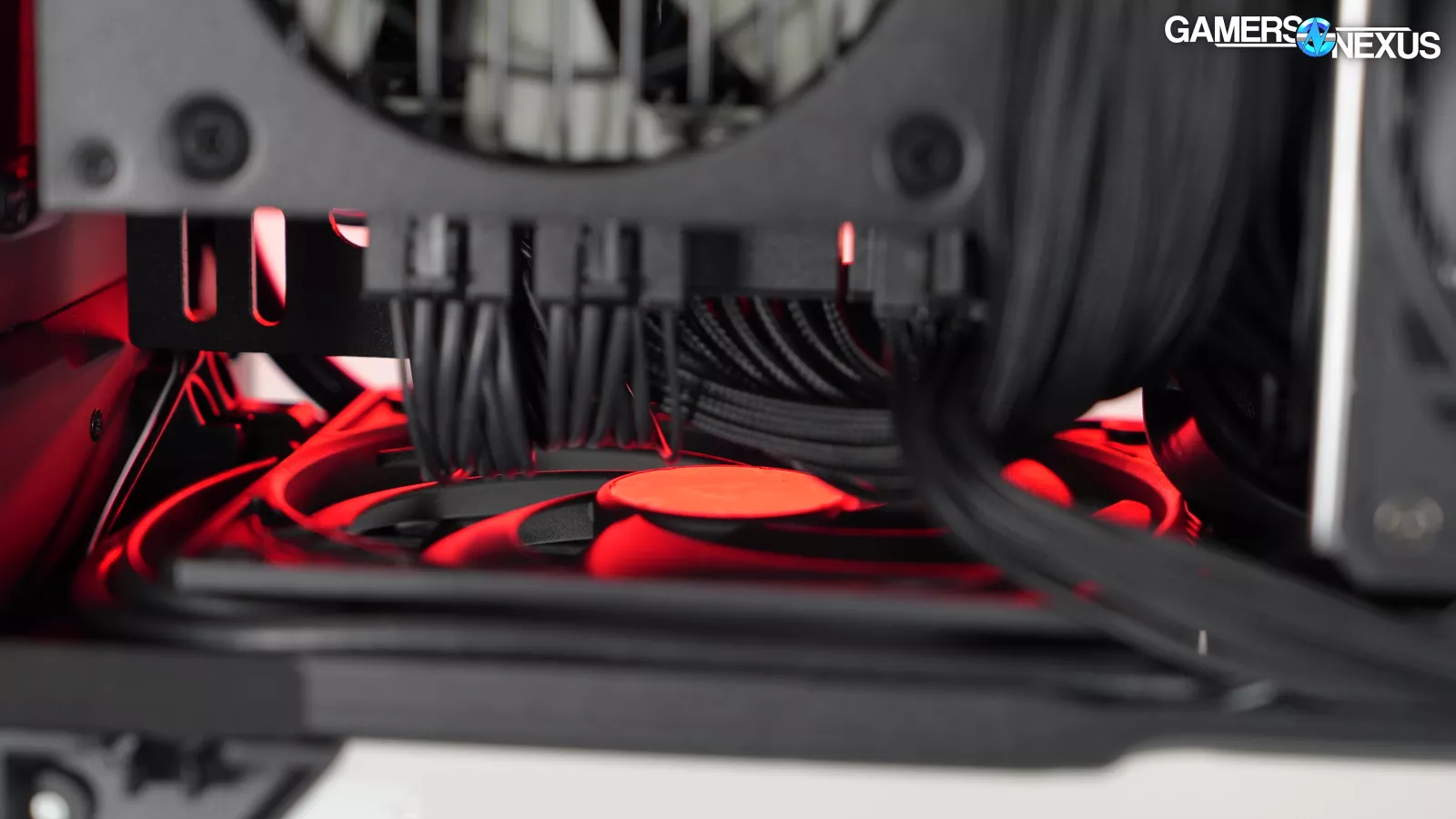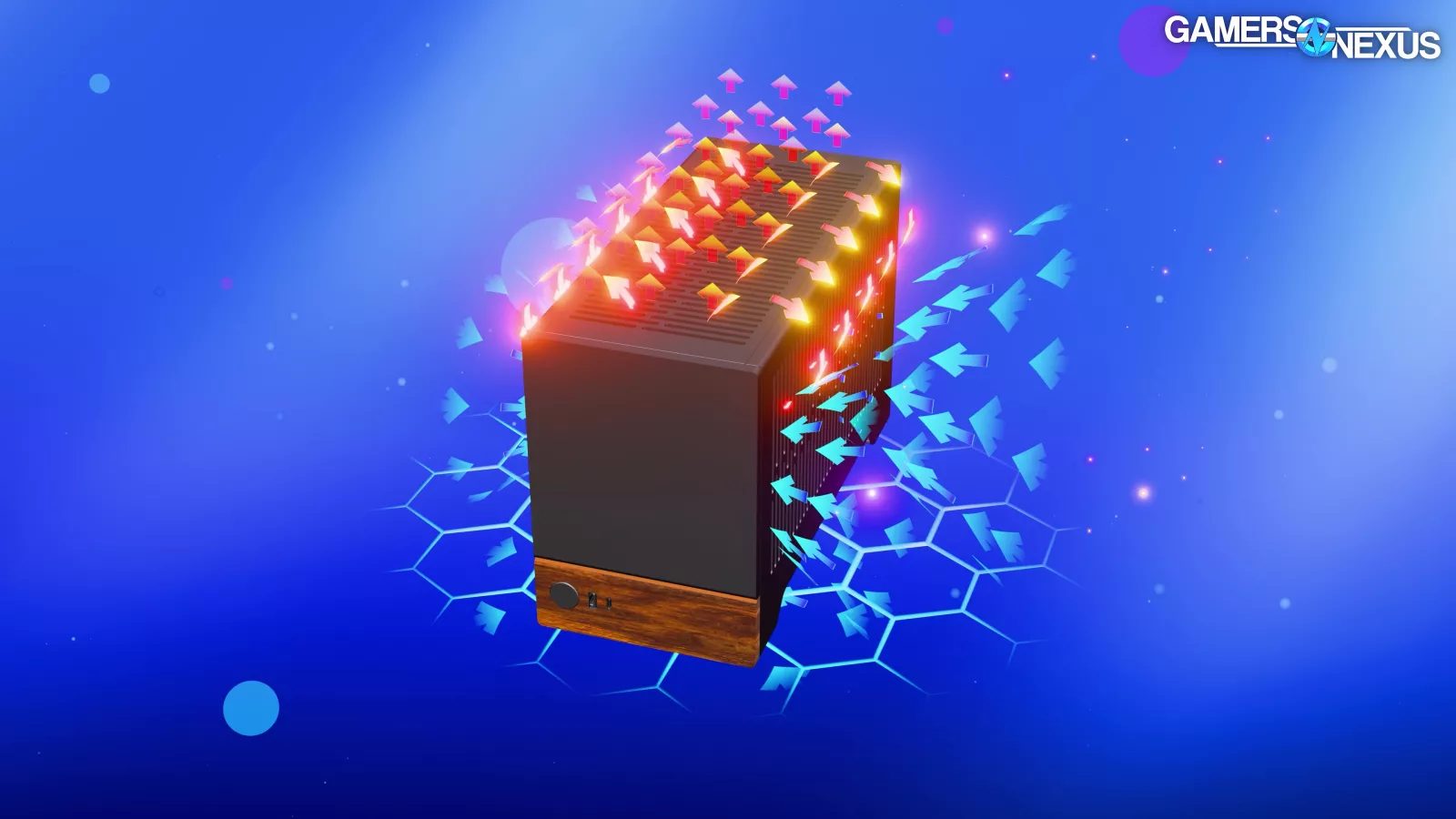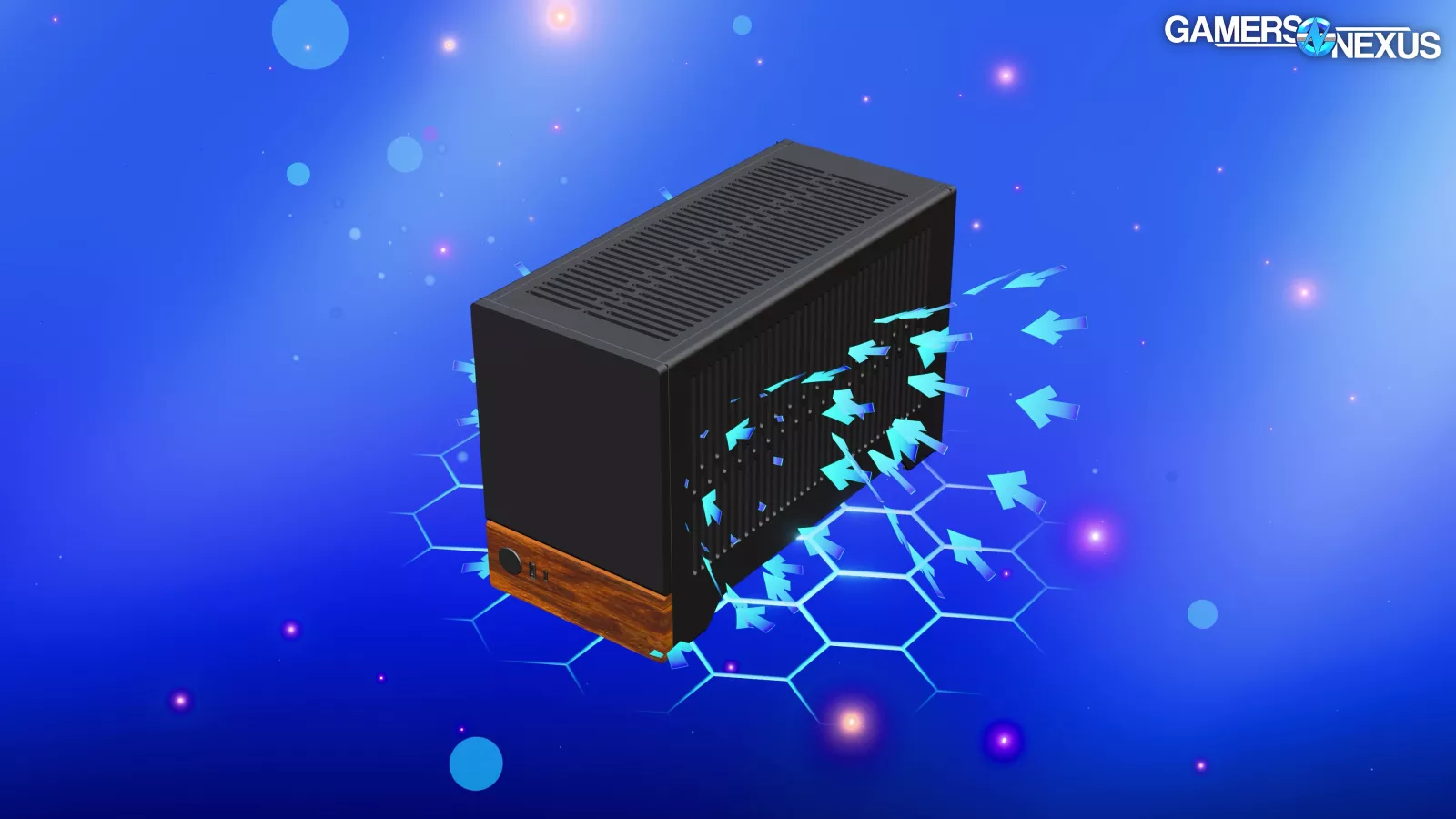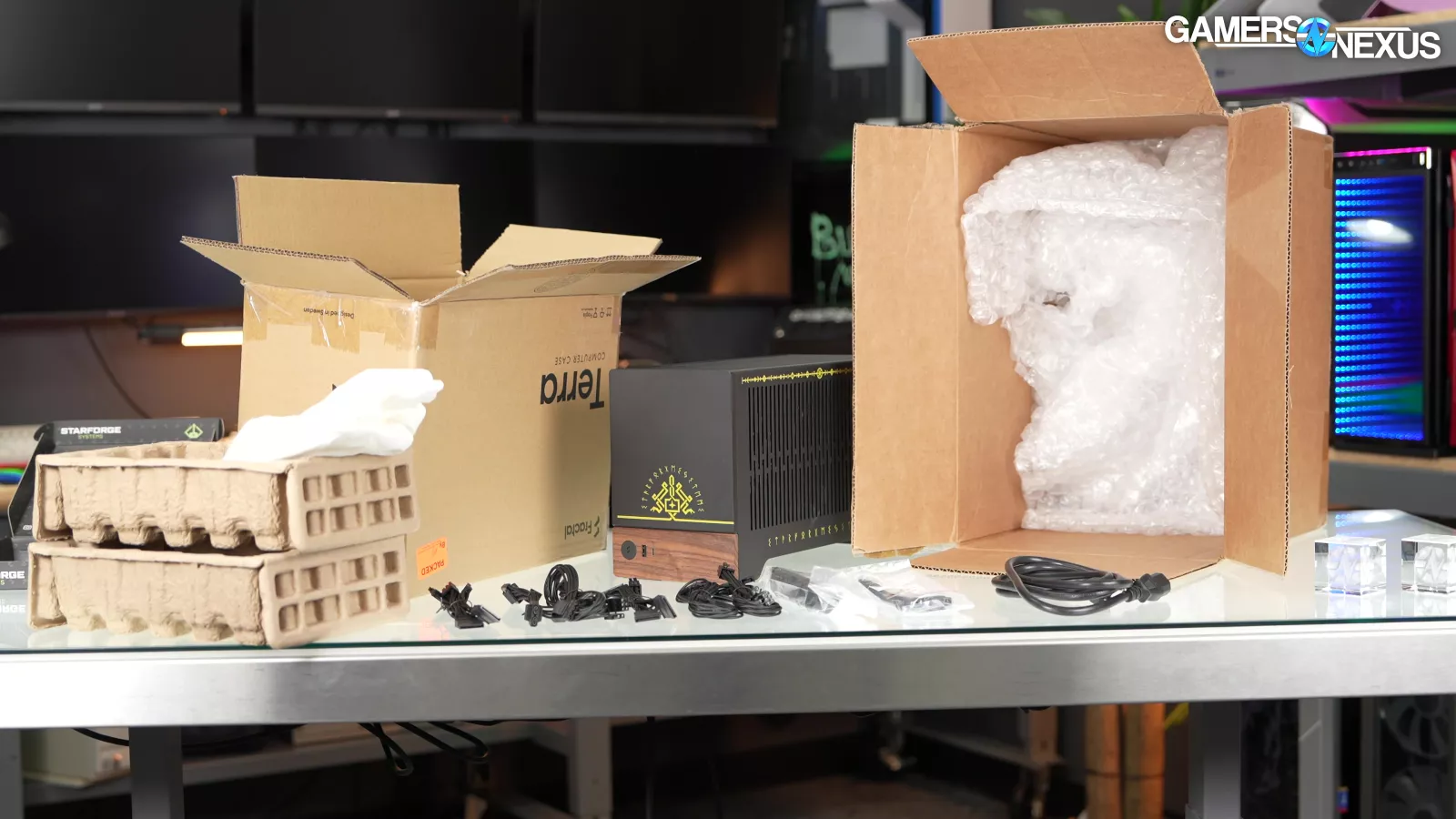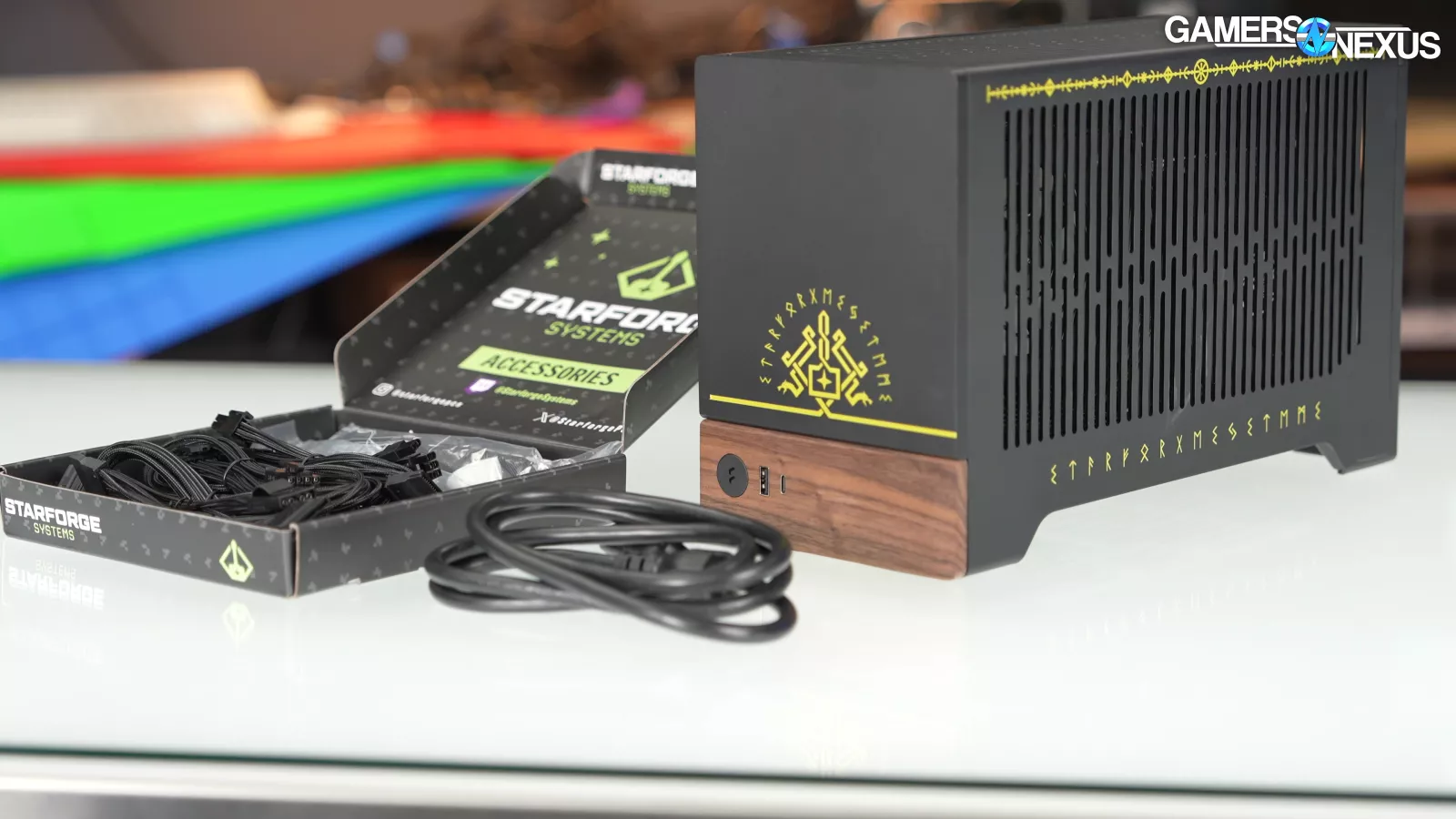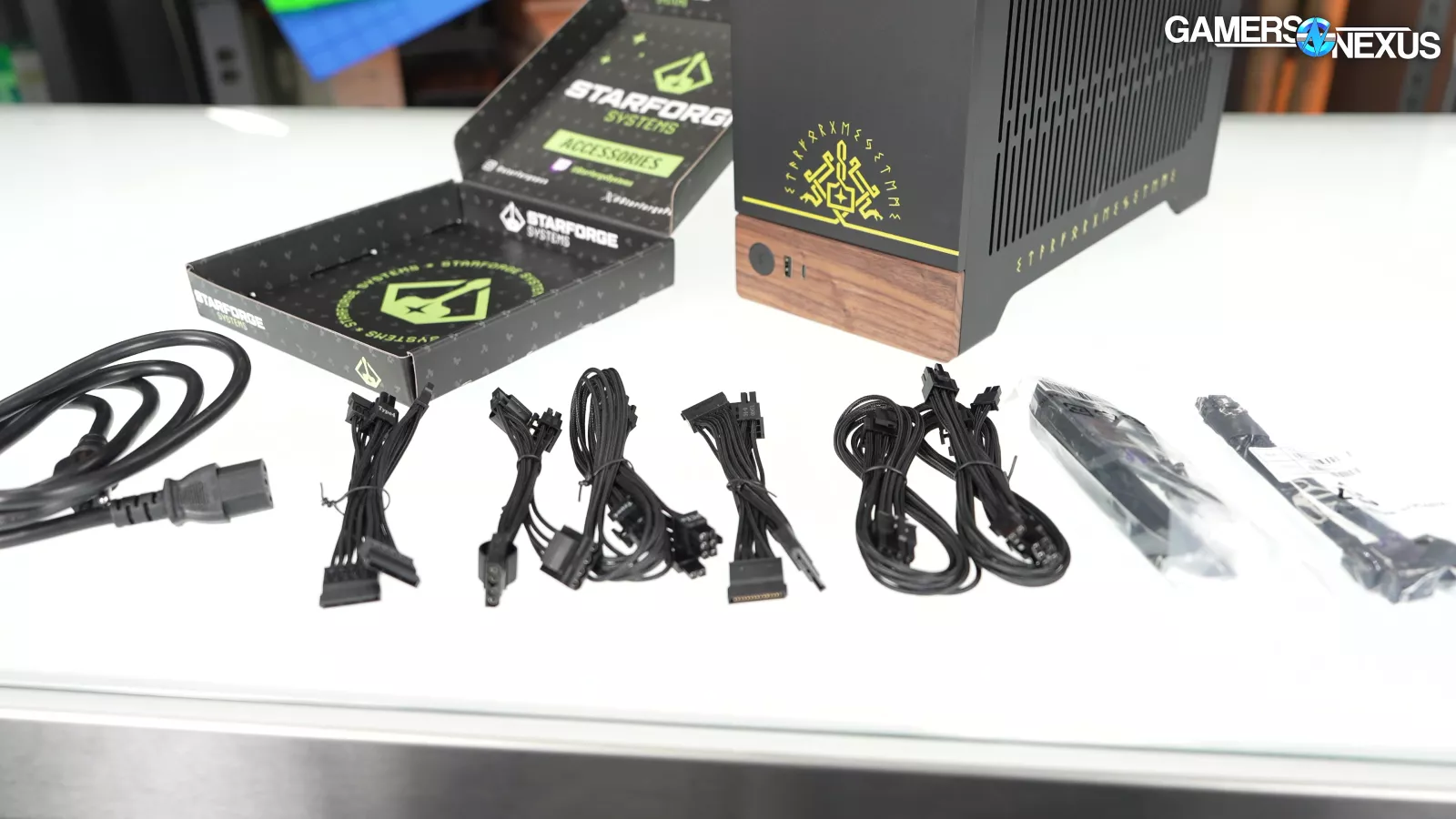
Actually Good: $2400 Starforge Pre-Built Gaming PC Review (Lowkey Fractal Terra ITX)
Last Updated:
We review another Starforge pre-built PC to see if the company has rectified some of its QA issues and also examine the system's BIOS, Thermals, Acoustics, Power, and more
The Highlights
- The Lowkey is a mini-ITX PC build from Starforge that uses Fractal’s Terra case
- Our Lowkey’s custom paint job had damaged paint on the front of the case
- The Lowkey’s clean cable management and proper yet unintuitive fan arrangement show that it was built with attention to detail
- Original MSRP: $2,400
Table of Contents
- AutoTOC

Intro
We went undercover again to buy another Starforge pre-built gaming PC to review. For this testing, we had to get help from a local CNC shop to mill a channel into the integrated heatspreader of a separate CPU to validate a curious microcode thermal behavior.
This allowed us to embed a thermocouple in the IHS to confirm bugs in Intel’s older microcode.
We also made a custom 3D animation for educational purposes to help explain some counterintuitive thermal behavior, but one which looks like excellent attention to detail for Starforge’s configuration designer.
Editor's note: This was originally published on August 24, 2024 as a video. This content has been adapted to written format for this article and is unchanged from the original publication.
Credits
Test Lead, Host, Writing
Steve Burke
Testing, Writing
Patrick Lathan
Video Editing, Camera
Vitalii Makhnovets
Animation
Andrew Coleman
Writing, Web Editing
Jimmy Thang
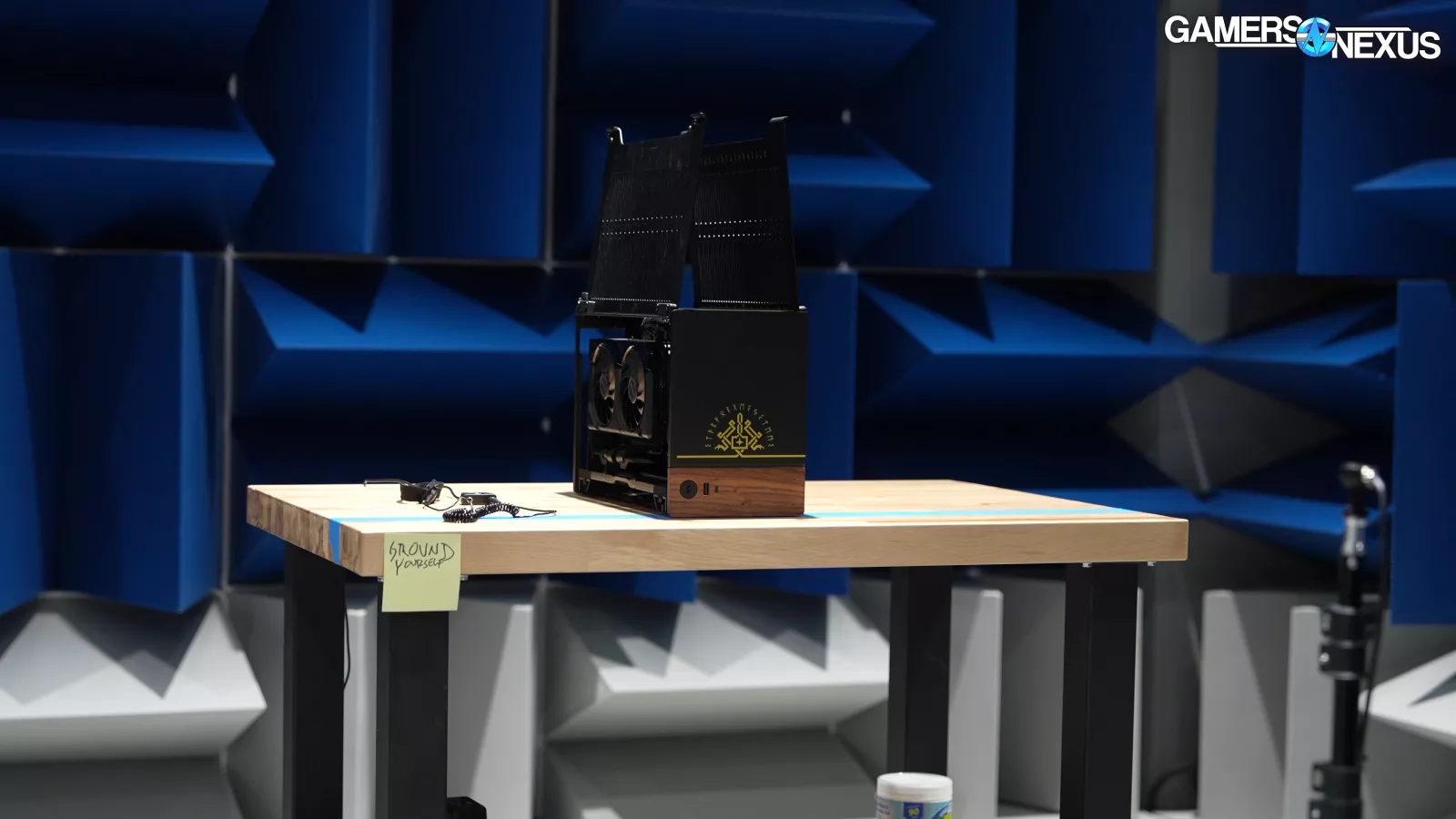
We ran acoustic tests in our hemi-anechoic chamber to test for that Fractal Terra hum problem. This chamber allows us to look at the frequency spectrum to objectively identify undesirable noises.
The last time we reviewed a Starforge pre-built, it was one of the better ones we’d looked at in a while.
The major points of improvement were screw torque, where multiple screws were loose on arrival, and the peel being left on the SSD thermal pad. Starforge came onto the scene with relatively quick renown due to its ownership by popular streamers and organization from skilled PC builders and defectors from Artesian Builds (watch our documentary chronicling the company’s collapse).
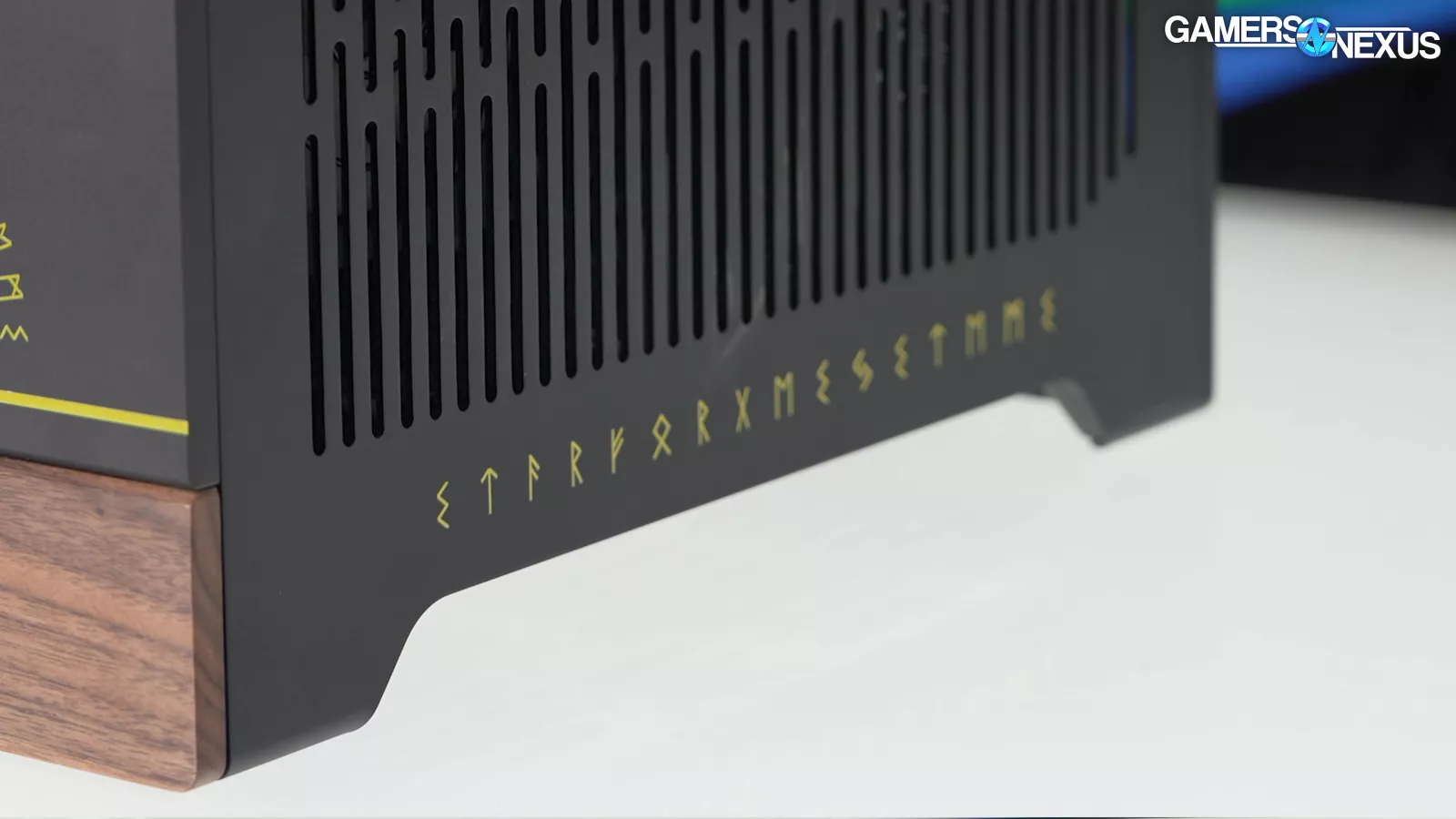
We wanted to make sure Starforge didn’t know where the pre-built was going, so we bought it anonymously. Just before April, we bought this limited Fractal Terra (read our review here) build, a mini-ITX Starforge PC with an i5-13600KF, 4070 Super, and custom paint job, for $2400. You might be wondering what the text on the exterior of the case says, and because we stop at nothing for a review, we hired a Norse rune expert to translate it. It says: Et frf orxmegete mme. We don’t know what that means.
We’re going to get straight into it this time because we have a ton of in-depth testing. Again, as the brief backstory, Starforge functions as a system integrator near Austin, Texas and is owned by OTK, but otherwise operates fully independently. The company carries on a trend of streaming most of its PC builds, but the streamers aren’t the builders.
Although if they were the builders, that’d make the tear-down a lot more... interesting. Speaking of that --
Teardown
The Fractal Terra ITX case disassembles easily.

Internally, the first thing we noticed after taking the top of the case off is that the spine is very slightly curved. The reason for this is because this particular case will allow you to shift the spine via screws on either end so that the builder can bias the spine to allow more room for either the cooler or for the GPU. In this case, Starforge decided to provide a little more room for the CPU cooler.
One of the first things we noticed opening the case is that cable management is, once again, immaculate. It features great attention to detail. For instance, a SATA cable was cleanly and tightly routed around a case fan’s channel. We also noticed that cables were also well hidden under the CPU cooler. In addition, cables were cleanly tied around the PSU mount. The GPU power cable also featured a nice bend so it could fit cleanly inside.
Unlike the Starforge Horizon II Ultra, which had a number of loose screws, we didn’t find any with the Lowkey.
Removing the CPU cooler, we can see a good application of thermal paste, which is more than necessary, but that’s not going to hurt it.
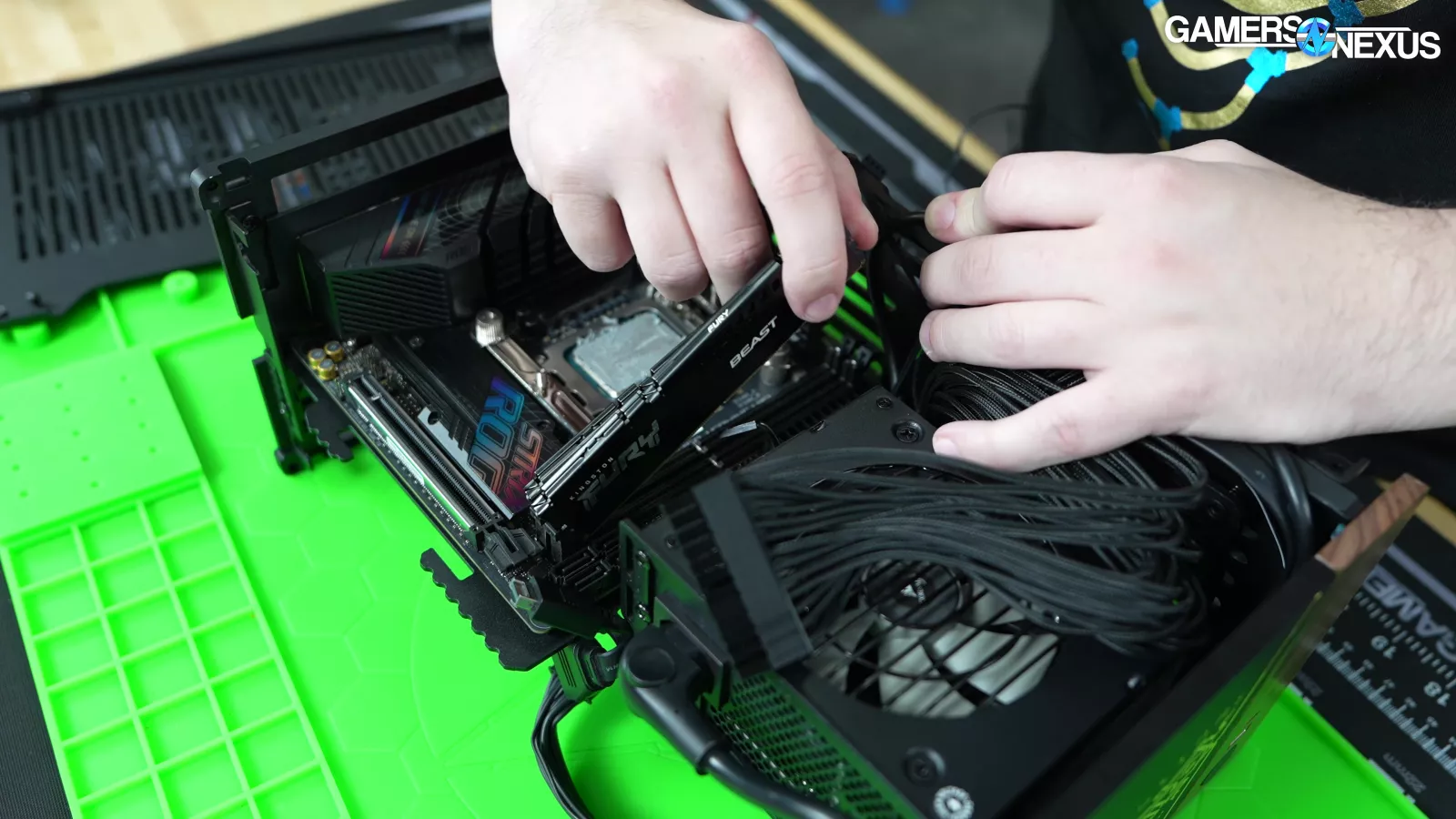
Removing all of the cables in the case, we can see that everything was seated fully. This is good and something that we don’t always see in pre-builts.
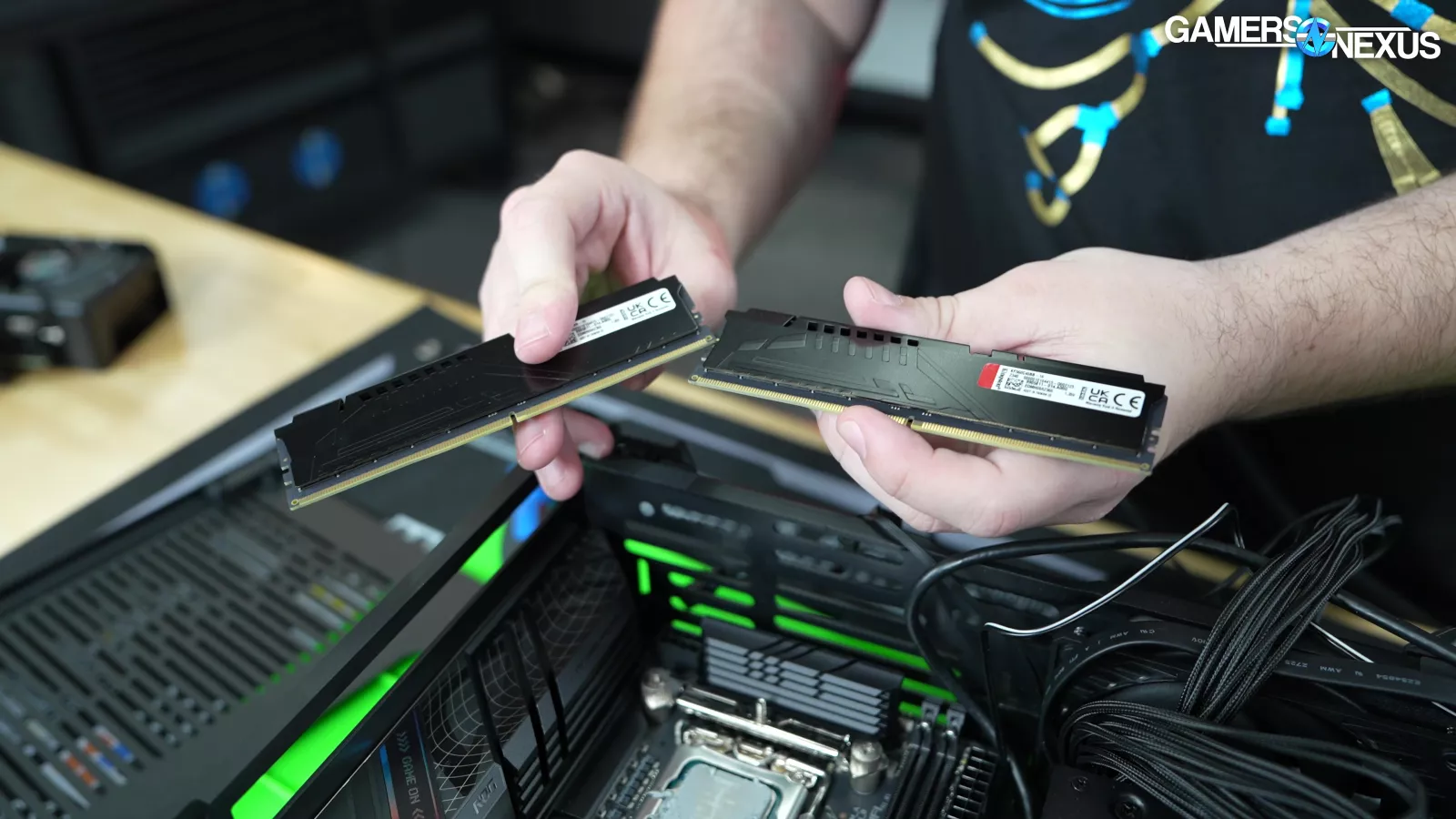
Looking at the RAM, it’s exactly what Starforge specifies on its website. A lot of SIs will just ship RAM of roughly the same spec but no specific brand so that’s cool to see.
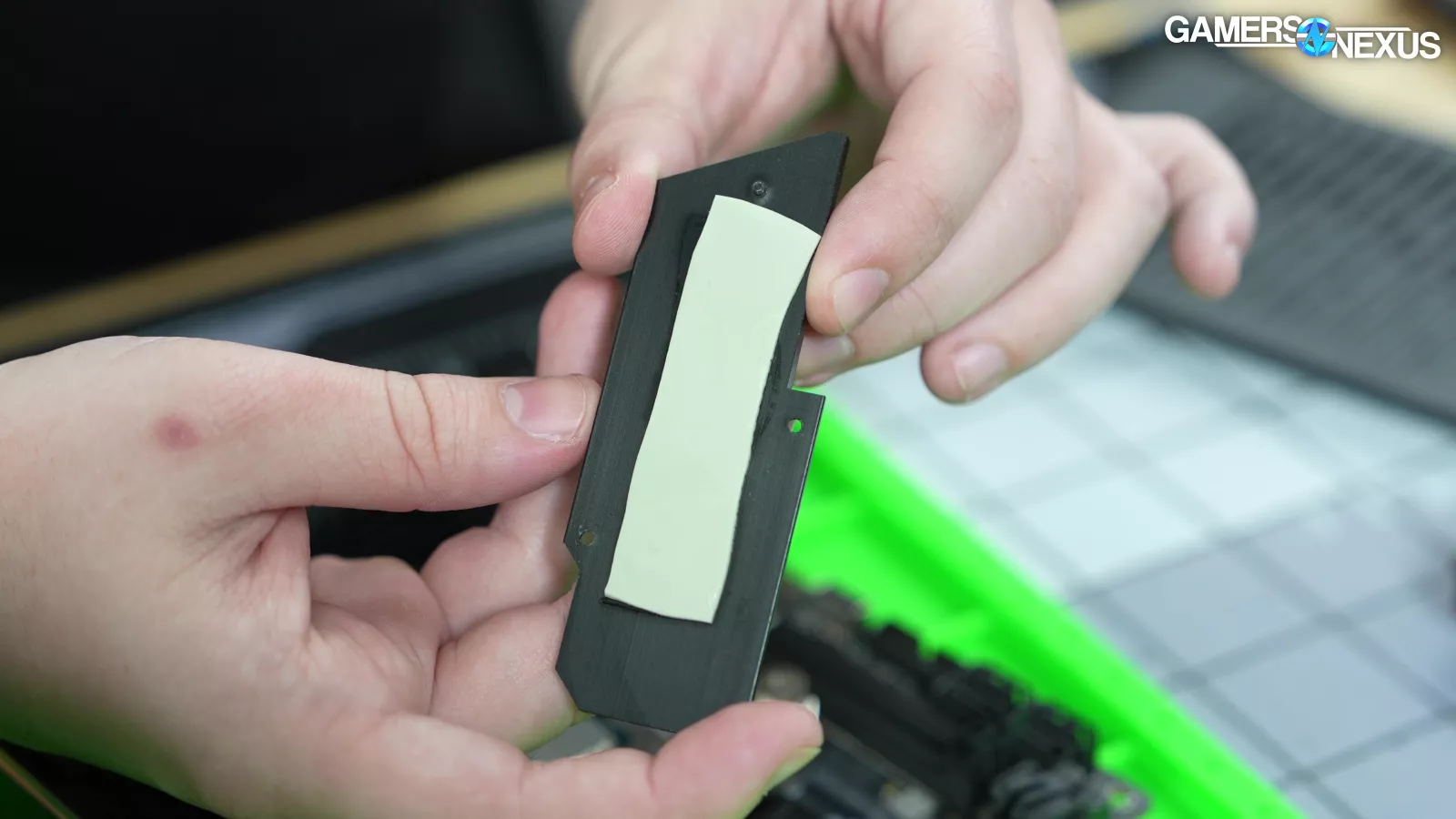
Another issue that Starforge had regarding the last system we reviewed from the company is the fact that they forgot to remove the M.2 tape. Fortunately, this time around, the company resolved the issue.
BIOS
Starforge emailed our undercover customer account on August 16th advising us to update BIOS and run the most recent microcode revision. The email linked instructions, recommended OCCT stability testing, and extended our motherboard, CPU, and RAM warranties for four additional years beyond the purchase date (six total). The instructions are clear, easy to understand, and most importantly, proactive.
This is excellent handling of a problem that Starforge ultimately didn't cause. And appropriately, it’s one that we think Asmongold, one of the owners of Starforge, is now experiencing with his own system on stream.
Once degradation starts, Intel itself has said that the new microcode won’t fix it and that an RMA is the only solution. That’s why it’s important that Starforge gets this message out to customers. They’re doing more for people than Intel.
On the other hand, if Asmongold ends up not needing it, we’d like to bore a hole through Asmongold’s CPU and use a focused ion beam and transmission electron microscope to do failure analysis with a lab contact -- but that might be another story.
Back to the Lowkey: Our testing was performed with out-of-the-box settings.
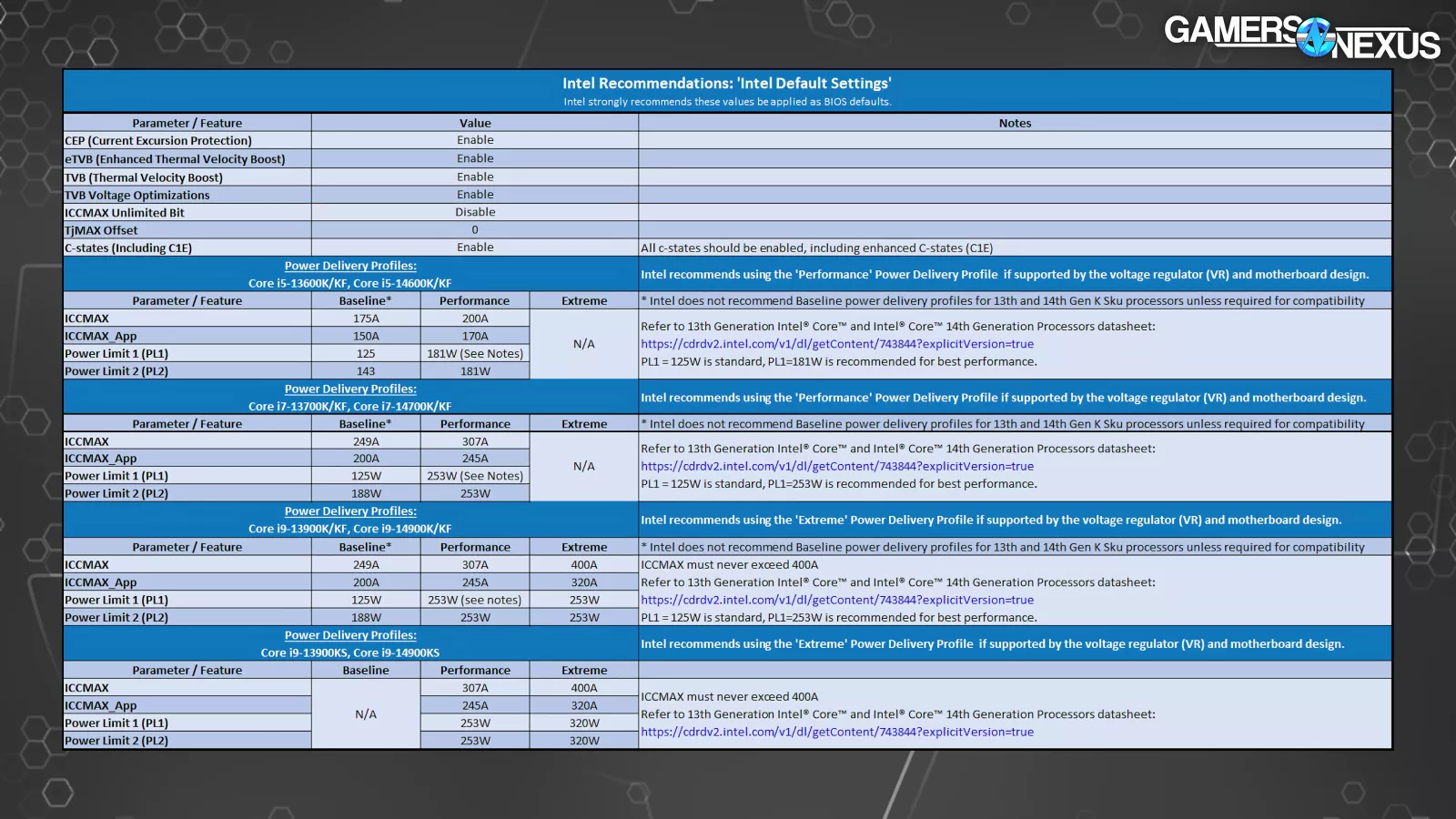
CPU LLC was manually set to level 2, which is abnormal, but not a problem. This could be done to minimize voltage spikes if Starforge was aware of Intel’s impending implosion -- and maybe they were: PL2 was left at 181W, but PL1 was lowered to 125W, which is arguably the "normal" setting depending on how you interpret Intel's Byzantine guidelines. Or maybe it’s not normal, and actually Intel wants you to use the Performance profile, except if it’s not supported by the VRM, except don’t use baseline for 13th or 14th Gen K SKUs unless the VRM doesn’t support Performance. And remember that Baseline isn’t Default, because Default is all of the settings, including Baseline, Performance, and Extreme -- and Intel strongly recommends applying these settings, except some prevail over others and so it is impossible to apply all of them. Intel’s guidelines have created an actual infinite loop in some situations, but that loop can be broken if you have a 14900K or 13900K, in which case they recommend the Extreme profile unless the motherboard doesn’t support it, in which case they don’t say what you should use instead, but they say you shouldn’t use baseline, so probably that means performance. But let’s be clear: Intel’s recommended DEFAULT settings aren’t actual enforced guidelines, because then they can shirk responsibility and pull motherboard manufacturers out of its hat of blame for going on a decade now.
The good news is that Starforge chose settings that make sense for this build.
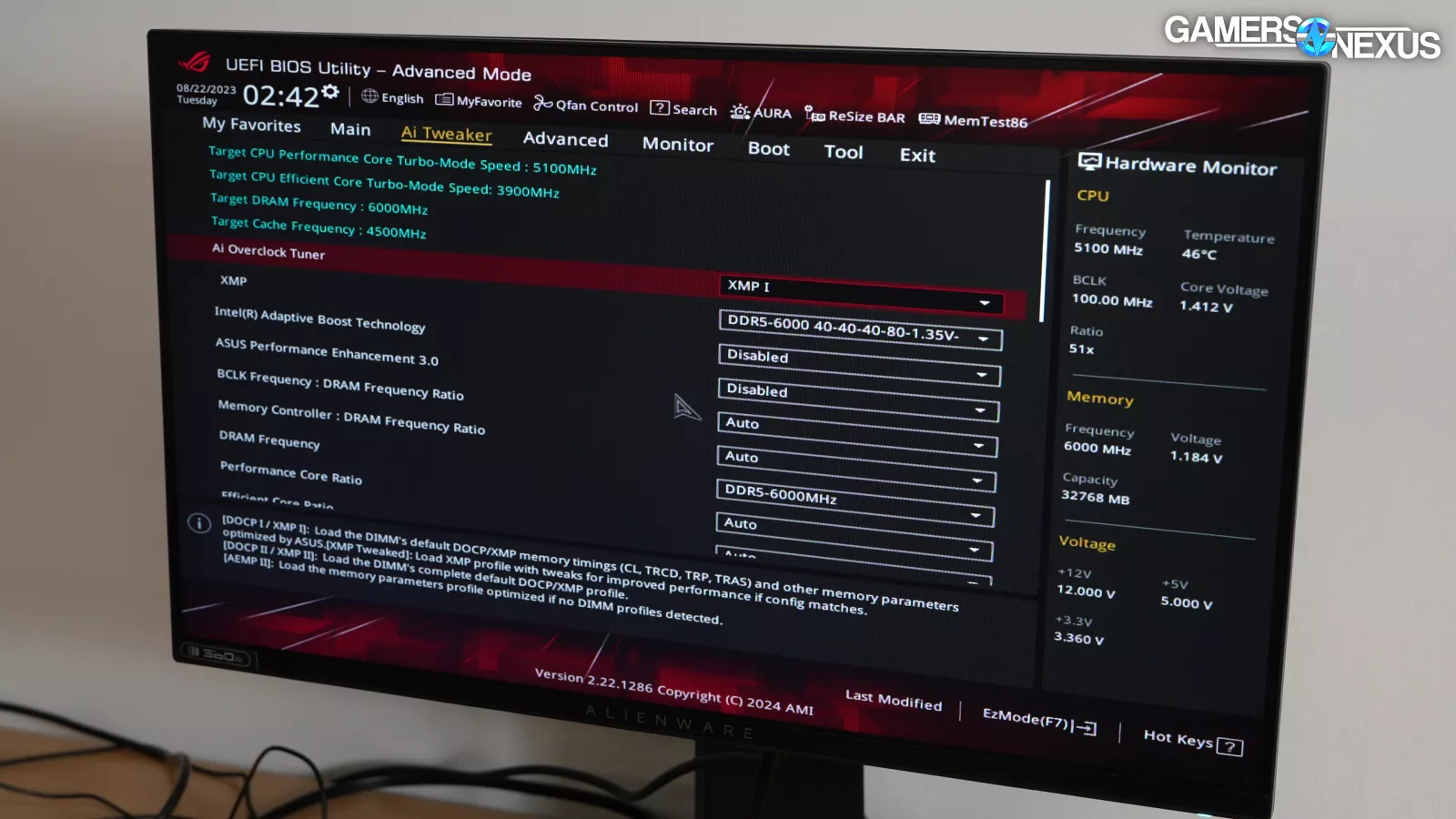
As we received it, BIOS settings were customized more than usual for a pre-built PC, which is pretty cool. XMP was enabled, which is the first hurdle that most pre-builts fail to clear. Specifically, “XMP I” was enabled, which in ASUS terminology doesn't actually mean “XMP I,” it means some of the primary XMP settings with other timings optimized by ASUS. This is a pre-built, not a test bench, so that's fine.
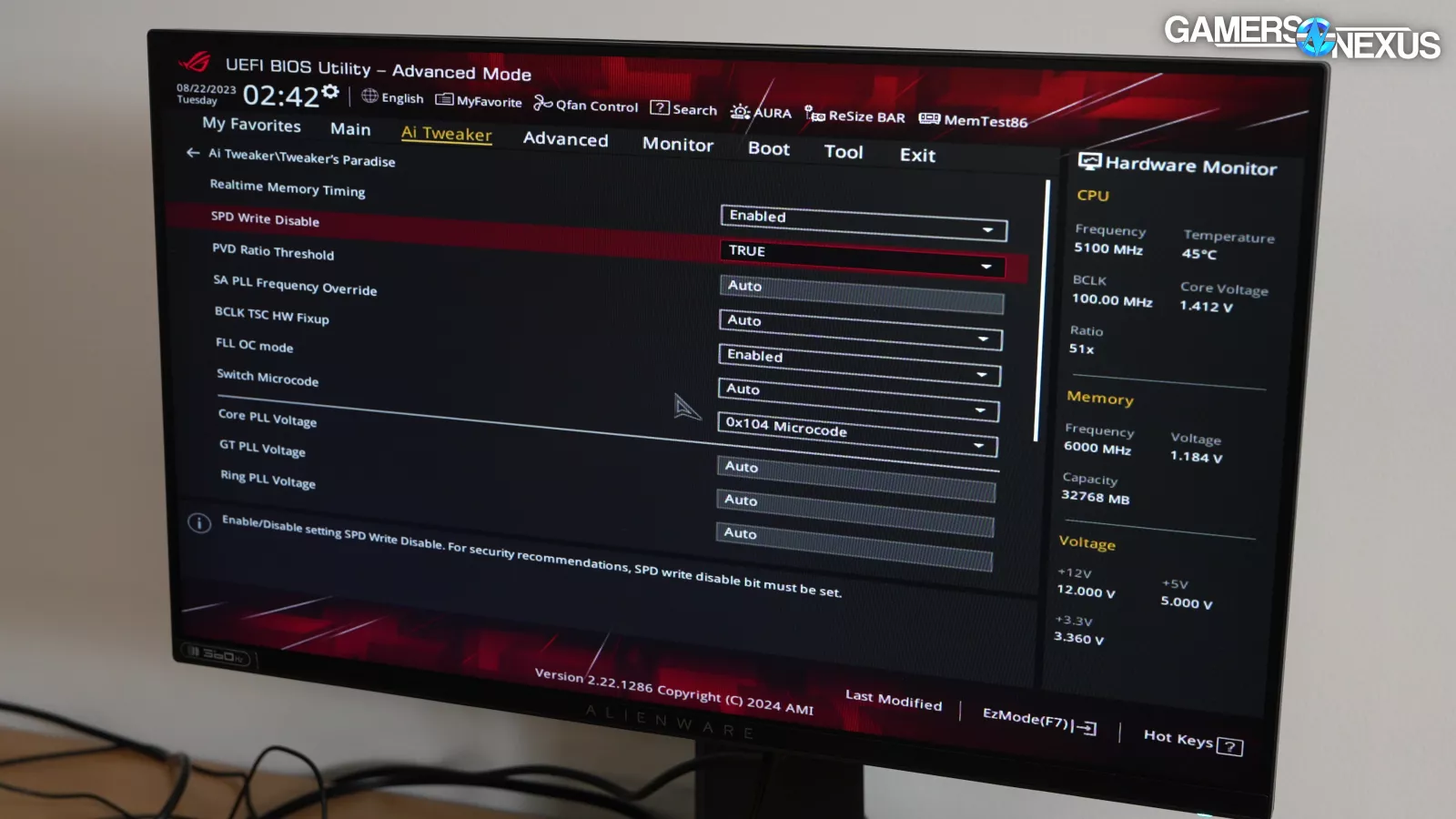
The other changes included these:
- ASUS Performance Enhancement 3.0 was disabled, which is the right move
- Intel Adaptive Boost Technology was disabled, which is a more unusual choice and nerfs all-core performance, but proved necessary given the small downdraft cooler and cooling limitations
- Most interestingly, Starforge manually switched microcode version to 0x104 instead of 0x123, which was available on the BIOS version they shipped.
- With this, there’s a global negative offset of 0.1V on core and cache SVID resulting from the microcode switch
As for why the company might have done this, back in February or March, Starforge probably saw speculation that microcode versions 0x104 and 0x105 keep CPU temperatures lower, and decided that it made sense to use that microcode. Our own testing has shown that temperatures are in fact incorrectly reported on at least MSI and ASUS motherboards with that microcode version.
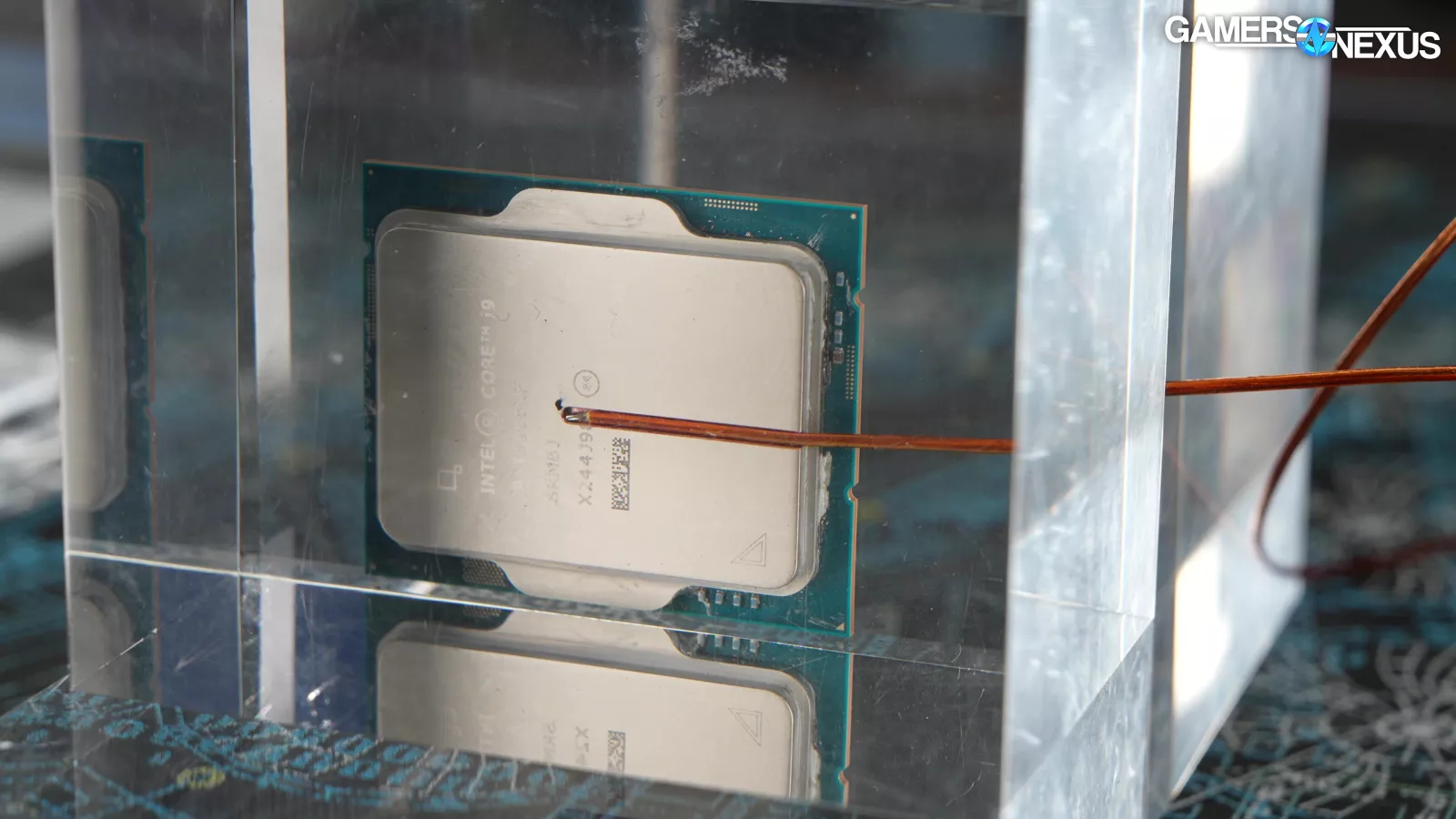
To prove this, we brought a 13900K CPU to a local machine shop and asked them to CNC mill a channel into the heatspreader. This allowed us to embed our own calibrated K-type thermocouple into the IHS and remain flush with the cooler, which will give an absolute ground truth for temperature rather than relying on Intel’s internal temperature sensors. We also shoved a thermocouple through a hole in the motherboard socket on our separate MSI test platform, giving us underside readings with a CPU that did not have this milled channel (so we had an unmodified test with a normal IHS and one with a customized IHS).
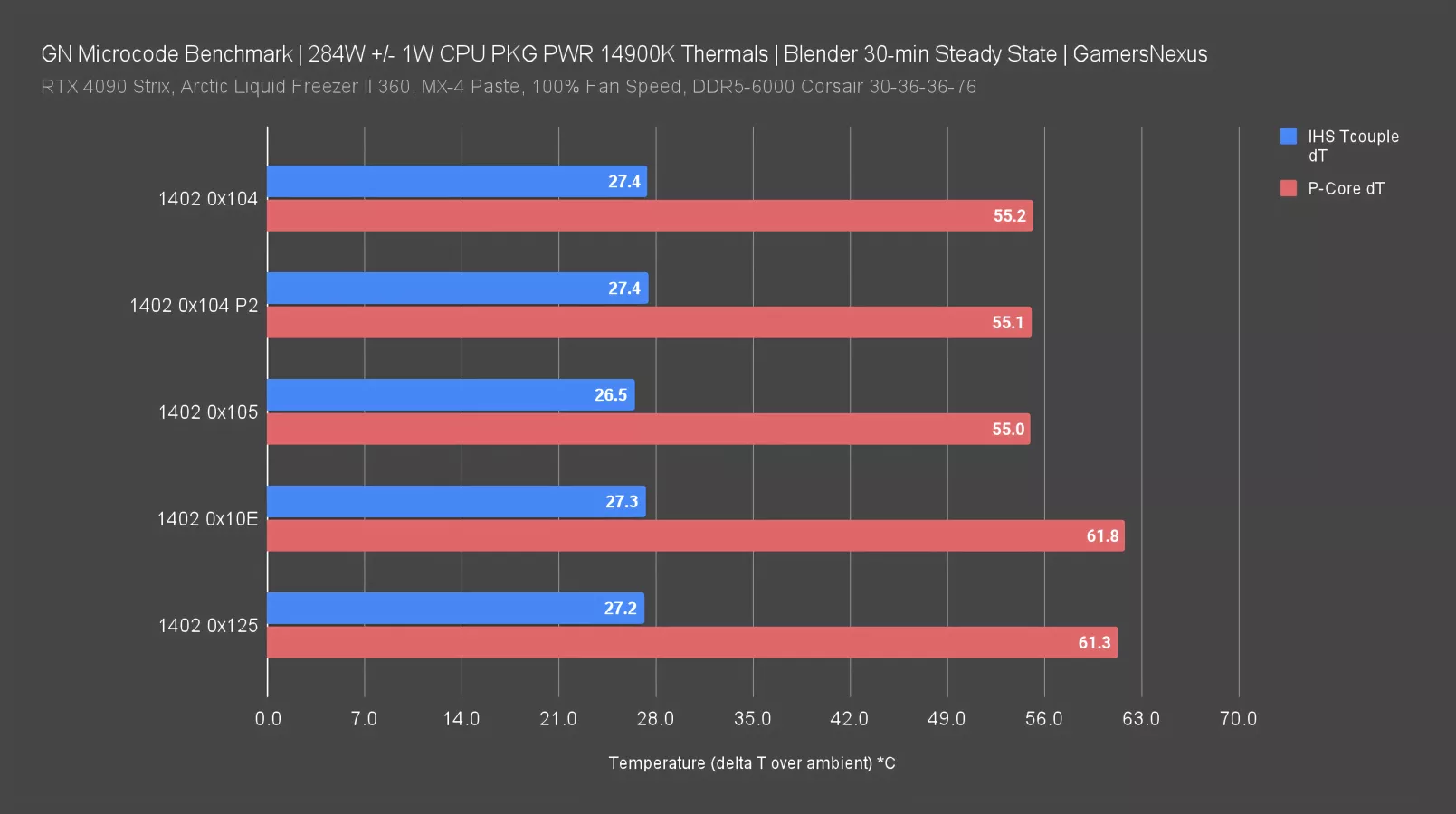
We’ll try to keep this simple -- we’ll explain it in a future piece. This chart shows two things: The P-core delta T over ambient and the heatspreader thermocouple temperature. The left axis shows the microcode version and BIOS version. If at any point the P-core temperature increases but the IHS temperature does not, that indicates a change to sensor behavior rather than an actual change in temperature. We know this because we also logged power at the EPS12V cables and in HWINFO throughout the testing, and all of these are at exactly 284W CPU PKG PWR, +/- about 1W variance. The deviation between CPU PKG PWR and the external sensors remained constant.
Suffice to say, the numbers are right. We checked them with other methods that don’t belong in this video, but will go out soon. We found that microcode versions 0x125 and 0x10E plotted about a 6C higher P-core, despite the IHS temperature being within variance, which means that this is not an actual change in the real temperature. It’s a change in the sensor.
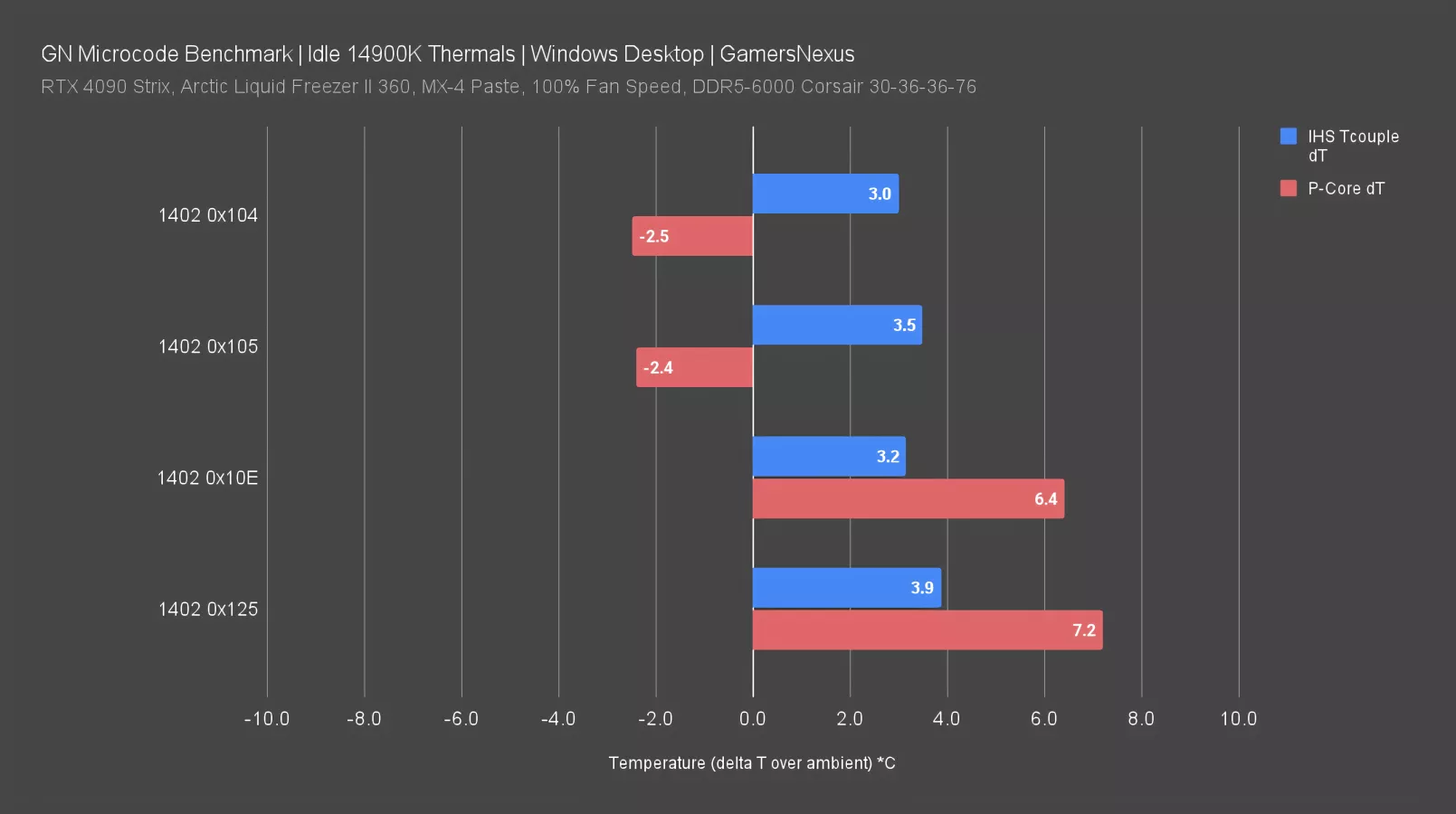
Just to prove our work, here’s a chart of the idle temperatures over ambient. It is physically impossible to run below ambient with this cooling setup. Physics won’t allow it. You would need something like liquid nitrogen to do this. BIOS revisions 0104 and 0105 both measured below ambient on the P-core, but above it on the IHS. You can see the IHS was relatively consistent in all these tests.

Thermals & CPU Frequency

Here’s the chart for the CPU-only test, meaning no GPU load yet. The max core temperature spiked to 95-96 degrees Celsius during the initial PL2 boost period with the room temperature at about 21 to 22C. You can see a sharp curve indicating that the CPU was seconds away from thermal throttling. Putting Thermal Velocity Boost aside, which has a dumb threshold of 70 degrees but only applies to higher-end CPUs, the hard TJMax of the 13600KF is 100C. The boost period expired just in time to avoid that 100C limit in each test pass, with the maximum core temperature then leveling out around 80C after it hits the limit. 80C isn’t bad, but forcibly limiting frequency is an unfortunate downside of ITX and small coolers, but it’s better doing it this way than just running it unrestrained entirely.
Fan Response
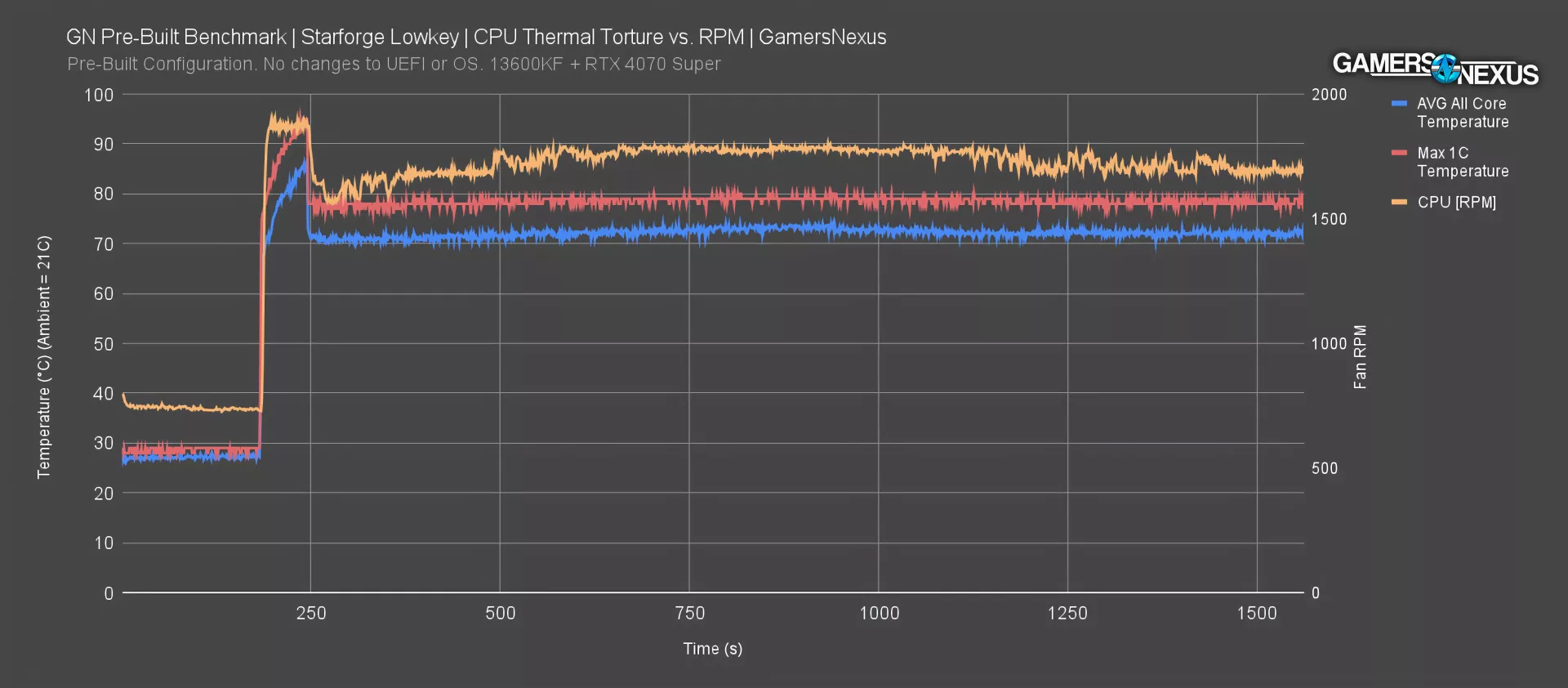
Here’s a look at the fan response, plotted on the right axis for the same chart. You can see a heavy ramp initially, blasting up to 1880 RPM during the heaviest load period (and being unable to keep up with the heat). It’s expected again that a small downdraft cooler won’t keep up, and part of the power limiting is not only for thermal, but also noise. The fan drops and rises a few times, mostly steadying out around 1600-1700 RPM.
Frequency Comparison
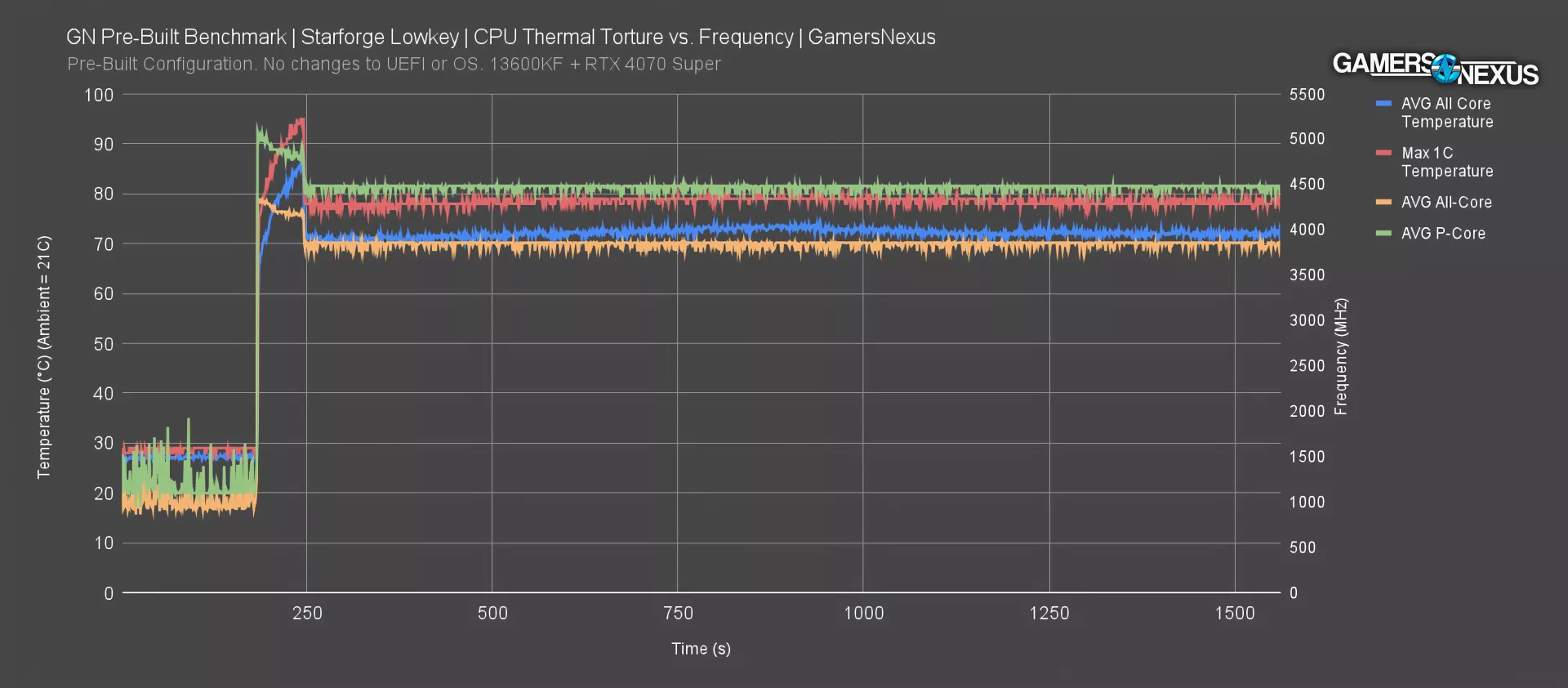
The initial load period prior to the PL drop already showed frequency throttling, with boosting to 5100MHz for AVG P-Core and rapidly falling. You can see the red spike, representing maximum single-core temperature, corresponding with the frequency decay to 4870MHz.
At steady state, after the PL barrier expiry at 250 seconds (or about 60 seconds after load start), clocks dropped to a fairly steady 3300-3400MHz range on the E-cores and 4400-4500MHz on the P-cores, with the all-core average at 3860MHz.
Frequency vs. “Standard” 13600K
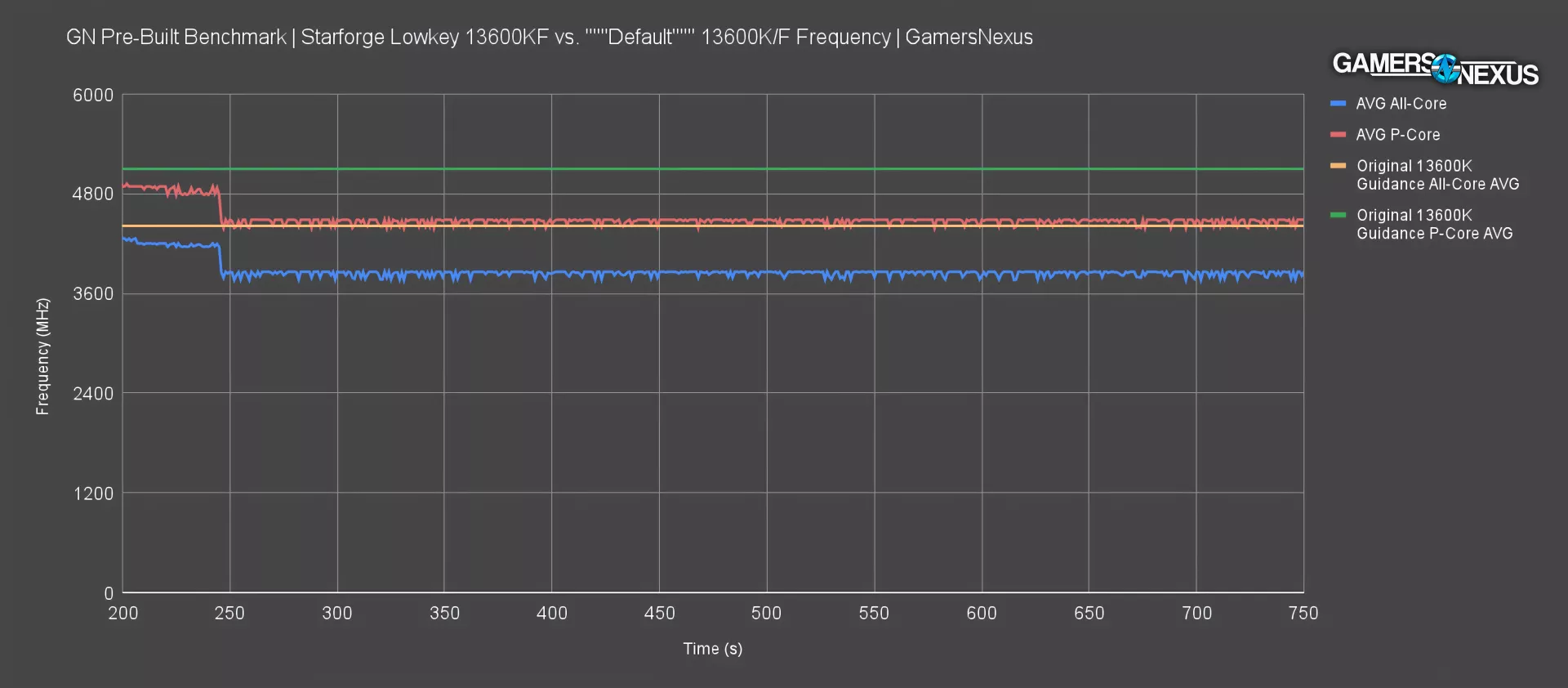
This chart shows the frequency of Starforge’s configuration versus the original guidelines offered by Intel during the review cycle for the 13600K. This would be for a CPU running at a higher power budget about 2 years before Intel’s concerns became public.
Starforge’s configuration is down by 500-600MHz from the completely flat 3900MHz E-core and 600MHz from the 5100MHz P-core clocks we saw in our original review sample 13600K (as well as the 20x 13600KFs we tested for our "Not Enough Samples" video). This is due to the limits set in the BIOS. Considering that this was an intentional decision to keep the CPU within thermal limitations of the small Terra case, this isn’t inherently a bad thing. It’s the nature of ITX -- but we do have some other thoughts on this that we’ll revisit in the conclusion.
GPU Temperature
The full torture workload is next.
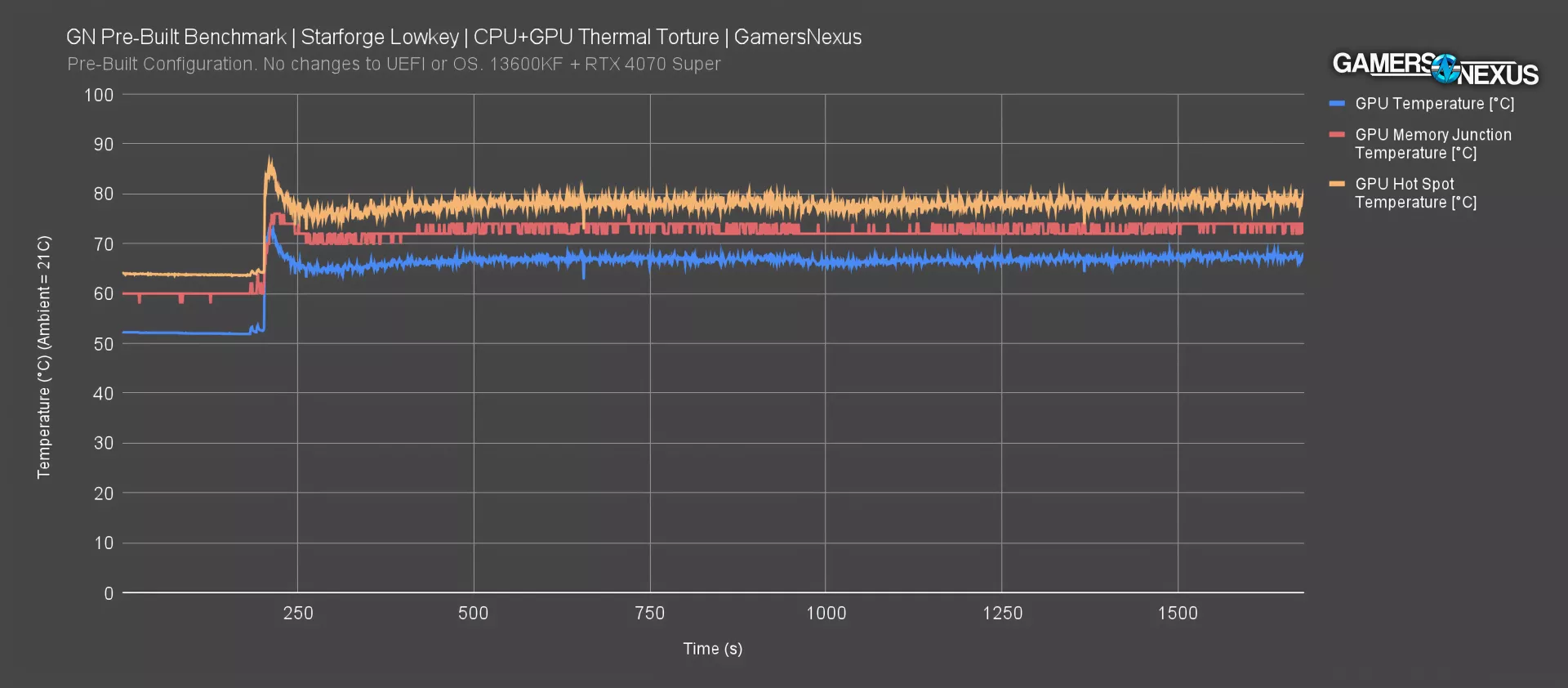
Starting with GPU thermals, the 4070 Super leveled off around 67 degrees Celsius with hotspot and memory temperatures around 79 and 73 degrees, respectively. GPU temperature peaked at 73 degrees before the GPU fans ramped, resulting in a peak GPU fan speed of 2400RPM (70%), but as the system reached steady state, the speed dropped to around 2100RPM. These are completely acceptable temperatures; there was no abnormal, non-Boost behavior throttling and the GPU remained strictly power constrained at its stock 220W limit, which is good.
Animation
Starforge swapped out the stock DeepCool fan for an Arctic P12 Slim PWM PST, with an identical fan added to the bottom of the case as exhaust. Both of these fans use ASUS' default curve, which maxes out at a reported CPU temperature of 70C. The placement of the bottom exhaust fan isn't ideal, but that's due to the case design. Starforge's setup aligns with the recommendations made in our Terra review.
Alternative Fan Position
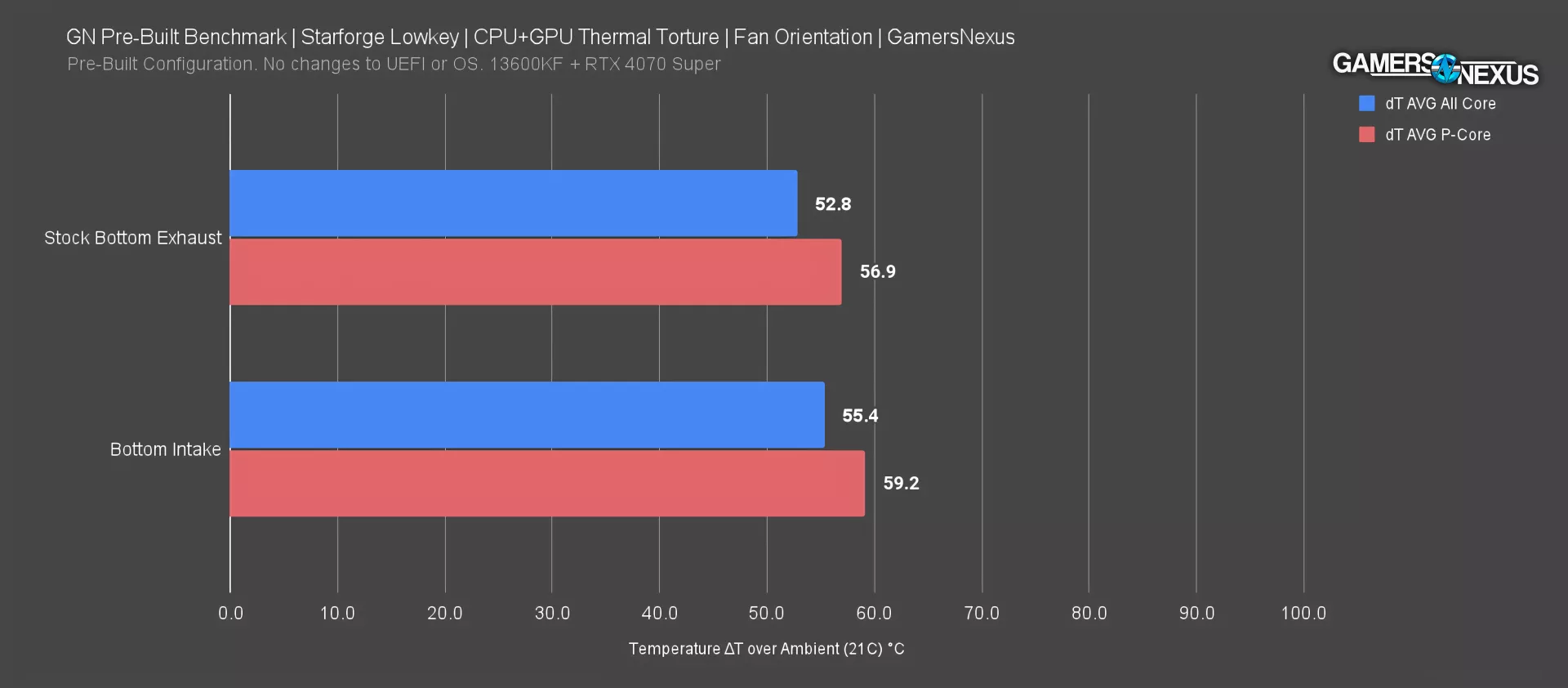
We also did an A/B test with the bottom exhaust fan flipped to intake. The chart shows that Starforge’s chosen configuration of bottom exhaust performs 3 degrees better for CPU thermals than bottom intake when looking at delta T over ambient results. That’s a big difference and shows someone at Starforge chose the ideal setup, and the one which is less obvious. That’s great.
Here’s an educational 3D animation we made to help explain why this behavior happens, since bottom intake would be the natural inclination, but is worse. After all, cooler air is closer to the ground.
If the bottom fan were flipped to intake, the entire system would be heavily biased towards positive pressure. A positive pressure configuration means that more air is forced in than forced out, and so to achieve some level of equilibrium, the pressure system dictates naturally that outflow would occur at every single hole in the case that doesn’t have active intake. This can cause some recirculation of warmed air and means that you’d lose control over where precisely the exhaust is. In this situation, the CPU tower cooler has vertically oriented aluminum fins for the heatsink. That means the finstack is pushing some of the exhaust out the bottom of the case. With a bottom intake fan, this air would be immediately pulled back in and recirculated, raising internal ambient. That’s why it performs worse. It would also get pulled in through the side panels as it exits the bottom.

With bottom exhaust, that warmed air jettisoned from the bottom of the case would get pushed away from the system by that extra bottom exhaust fan, which will not only prevent recirculation at the bottom, but also limit recirculation at the sides. That’s why this unconventional setup is so successful for Starforge’s build. And if you find these animations helpful to understanding the science behind performance, please support the extra work on the GN store.
Noise
Now we’ll get into noise testing in our hemi-anechoic chamber.

Here’s the dBA over time chart.
The Lowkey was extremely quiet when idle, especially for an air-cooled system in a case that had acoustic issues in our original review. Measured at 1 meter and in a noise floor of about 14dBA, the noise level at idle was indistinguishable from the noise floor, which is awesome. In the first 170 seconds of this test, it is effectively totally silent when idle.
When the torture load started, the fans ramped immediately to a peak of about 29dBA SPL at 1 meter, synchronized perfectly with the CPU and case fan speeds. As the CPU's initial boost expired and its temperature dropped, the noise level dropped back down to 26dBA, then gradually rose back to 29dBA over the next five minutes.
Frequency Spectrum

Here’s the frequency spectrum plot. During the steady state portion of the noise test, the major peaks in the audible range were around 370Hz and 633Hz. Smaller peaks appeared around 223Hz and 844Hz. The Terra is prone to producing an annoying hum, but since the case doesn't come with any stock fans, the noise produced is completely dependent on what hardware is installed and where. So while the Terra can influence this, the fans can change it. Starforge used the same DeepCool AN600 that we did in our Terra review last year, and we heard the usual hum resulting from the CPU cooler pulling air through the Terra's side panel. However, Starforge successfully dropped noise levels by replacing the cooler's fan. As shown on the frequency plot, this completely altered the character of the noise. We’re not sure if they saw our findings with the original Terra, but this is absolutely what we would have recommended. Starforge did well to work this out.
Power
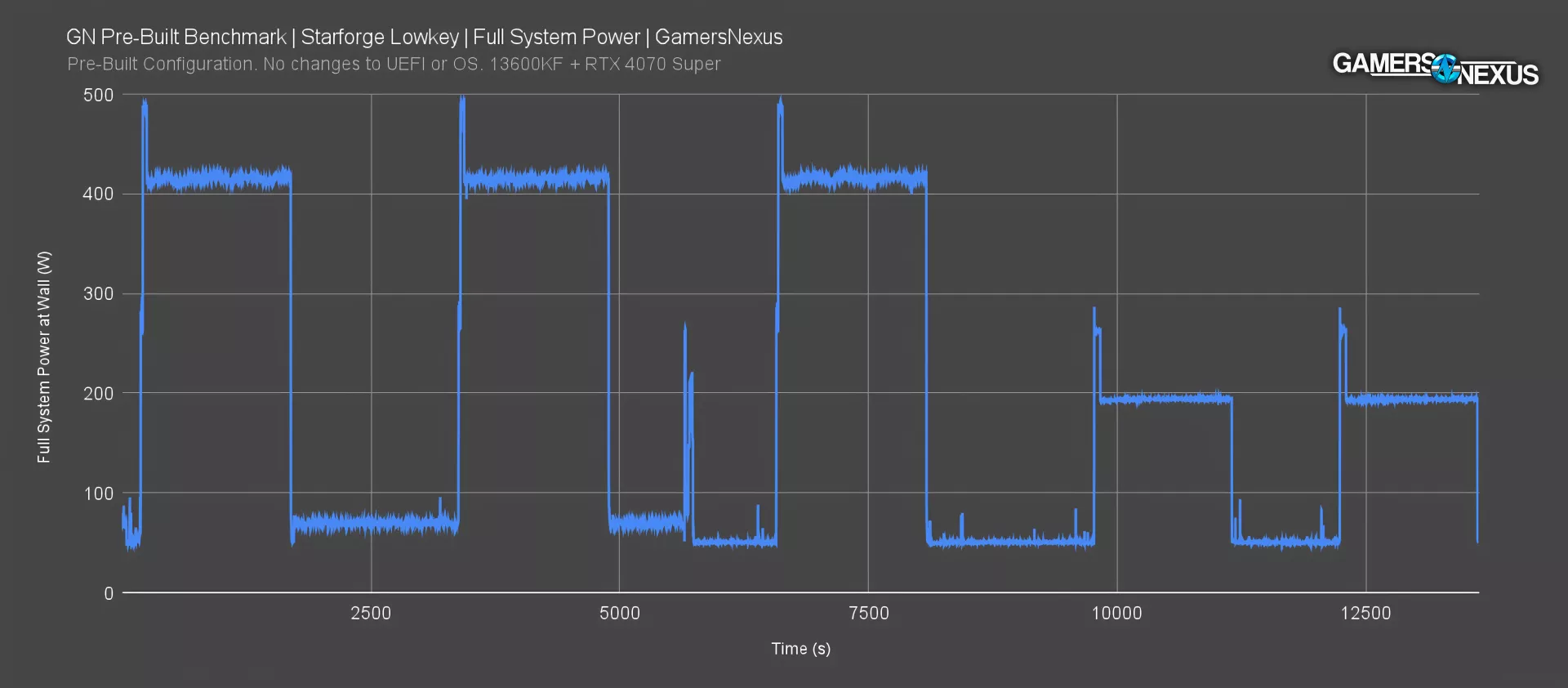
Power testing is our last benchmark.
For this test, we used a logging wall meter during thermal testing, which resulted in a very clean graph of three full-system torture passes followed by two CPU-only blender passes. During the full system torture passes, peak power draw for the whole system was approximately 490W, which dropped to 415W as PL2 expired.
With load on the CPU alone, shown in the last two passes here, full system power draw peaked around 286W and then held steady at 264W until PL2 expired. After that, it remained at 194W for the duration of the test. All of these numbers are well within the limits of the Corsair SF750 power supply that Starforge decided on for this build. They have left an appropriate amount of headroom without going completely overboard on the PSU capacity so that’s good.
Software
And now we’re on to software setup.
Fortunately, the system is free of any third-party software. BIOS and drivers were up to date as of March 28th, which is when the system was set up for a shipping date of April 1st. That means they’re not letting images sit too long.
The Windows key is stored in a text file in the C drive, which is hugely appreciated as certain BIOS or microcode changes can sometimes trigger deactivation. Some scraps of Starforge's automated setup process were left behind, but nothing big other than some unused desktop backgrounds.

The only problem we noticed was that a Realtek audio device was shown as missing in the Windows device manager before connecting to the internet. Starforge should be ensuring that all drivers are installed and working without needing to first connect to the internet. This should have been caught in a final check. The onboard and front panel audio jacks worked fine regardless, but it’s just good system hygiene to make sure devmgmt.msc shows everything as installed.
Packaging
Now for packaging and accessories. There are some hits and some misses in this section.
Starforge reused the Terra's original packaging for the Lowkey, except nested inside a larger cardboard box with a layer of bubble wrap in between. The Terra's packaging was fine, including a cloth bag to protect the painted surfaces, so reusing it was appropriate.

As delivered, the only external damage on the Lowkey was a small area of missing paint on the front panel. It's about a 7mm long strip that just fell off at some point. It's definitely visible. We couldn't find any paint residue in the packing material that would imply it was shipping damage, so it may have been damaged at the warehouse or improperly painted.
Some downsides: There was no documentation whatsoever included with the system. We found this to be a positive in our original Starforge review and were disappointed to see it gone. There was no quick start guide, or QR code for an online guide, and no sticker over the motherboard's video ports, or manuals for any of the components, or warranty paperwork for any of the components. The only thing left was a piece of cardboard with some Terra concept art, which is included with the Terra. Weirdly, so are other things: Fractal includes 10mm PSU standoffs with the Terra that can drastically impact thermal performance, as we saw in our review, but these were not included in the packaging.
Our last system at least came with an instruction card, so we assume it was left out of this one by mistake, and unfortunately, that is a mistake that will create one of the few marks against the system in this review.
As a positive, accessories like all unused PSU cables, the GPU 12V-2x6 adapter dongle, and the wireless antenna were kept and packed tidily.
Conclusion

The positives and negatives are pretty clear with this one. We’ll go through them line-by-line:
Starforge exceeded expectations with the BIOS configuration choices. They, overall, made good, manual decisions. The microcode choice stands out as something we wouldn’t advise since that version is just broken for its temperature sensing, but given the information that they had back in March or April, we think the choice made sense in the context of the time.
Starforge also exceeded expectations by extending its warranty on top of Intel’s screw-up, which is exactly what SIs have to do to separate themselves from competition.
The build itself shows general physical skill: Assembling this in a way where no cables droop into the fans, even in shipping, took some care.
The fan orientation illustrated clear attention to detail on the specifics of the build. They weren’t just randomly throwing fans in -- they thought to orient it in a way that might seem counter-intuitive, but is actually better. We saw similar attention to detail with the choice to swap the fan on the CPU cooler, which reduced some of the humming you’d hear with the stock fan.
All of these, but especially the choices around the fans, illustrate to us that whoever designed this configuration is clearly plugged-in to the enthusiast community. This comes across as a company actually researching and trying to do well with its builds, rather than any number of SIs that sometimes seem to choose parts at random. That’s refreshing to see.
Now for the criticisms and feedback:
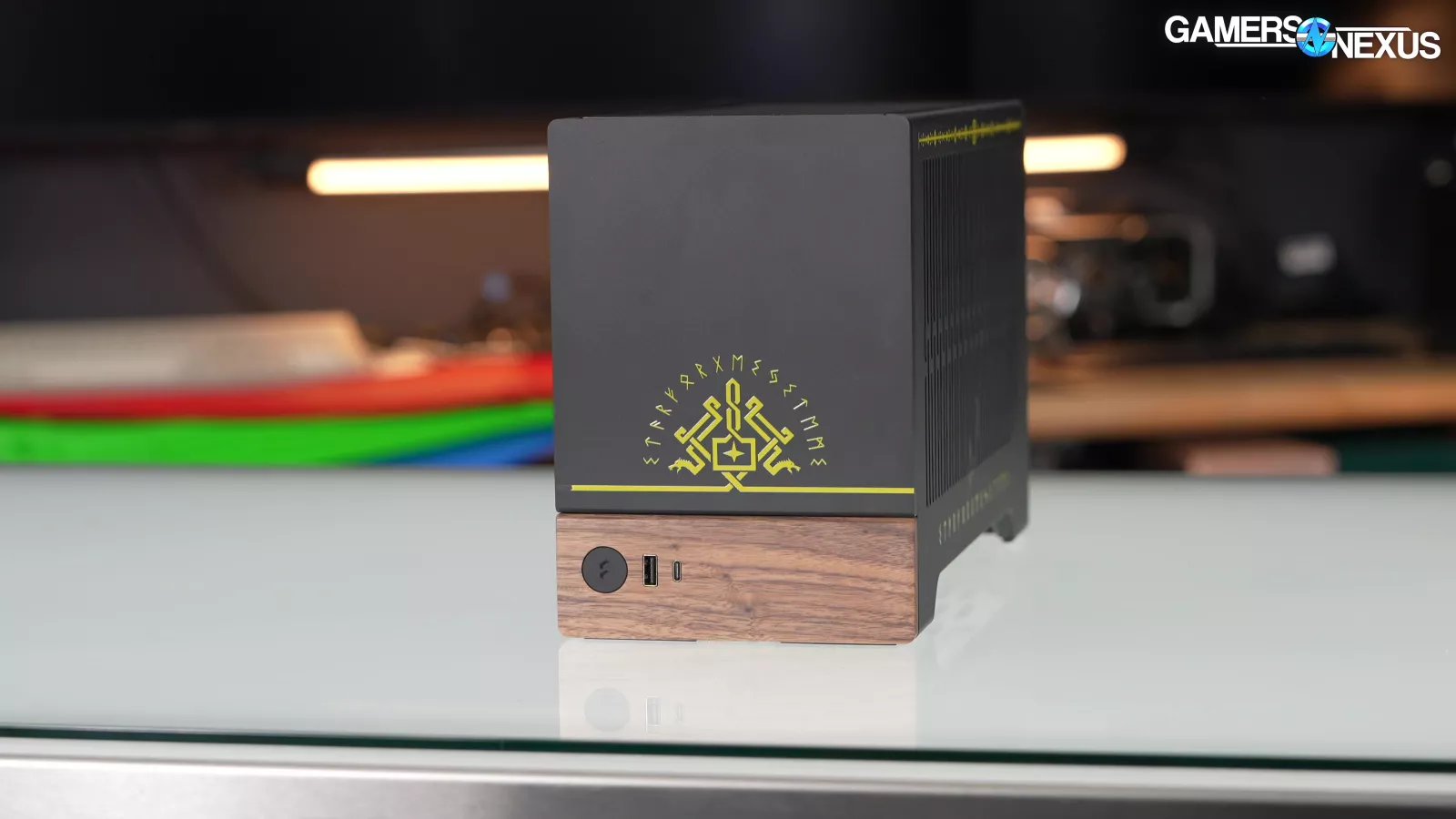
The damaged paint was the first thing that greeted us out of the box. Given the limited nature of this specific build, it was a huge let-down. Starforge needs to take extra QC measures to make sure limited builds leave the warehouse pristine. We couldn’t find evidence of the paint damage happening during shipping or in contact with packing materials, although it’s possible. If that were the case, we still think Starforge should consider a protective strip of something in front of custom vinyl, sticker, or paint jobs.
We also would like to see the instructions and manuals included again. Our last Starforge pre-built had an included card with setup instructions and that was missing here. Likewise, although Starforge included the extra PSU cables, we did not see the 4x PSU standoffs normally included with the Terra.
Finally, the thermal situation is brutal in this case. There’s not a ton that can be done about that. Starforge also customized the fans, which helped deal with the small box as well. The reality is that there are physical limitations to cooling in this case. We think Starforge’s overall balance is good, but that they should have customized the fan curve. This is something we scrutinized last time as well. There is room in the fan curve to improve this balancing act further.
Looking at prices, the price of a like-for-like build without the custom case would be about $1,750. Adding in the cost of a Windows license and miscellaneous accessories, let’s call it $1,850. At this pricing, extra cost beyond DIY was about $550 to maybe $600, depending on sale prices. The Starforge Horizon II Ultra we reviewed last year had pre-built overhead of about $450. It looks like Starforge’s to-customer price difference is about the same, except with maybe $100 to $150 added for the color customization.
This still puts Starforge in the middle of the pack: It’s more markup than Cyberpower or iBUYPOWER and less markup than brands like Corsair. You’re ultimately paying for thought to be put into the configuration, competent assembly so you don’t have to build it, and support. We think on many of these fronts, Starforge has nailed it with this system.

